RESEARCHING THE RAINBOW

SOWING DRAGONS’ TEETH
Water dragons’ abundance in the hobby during the early noughties has cemented the idea that they are a great pet, but is this true?


ARACHNID WARFARE
NOT EVERYTHING IS GOLDEN
EXOTIC NEWS • ZEBRA FINCH • KEEPER BASICS - HUMIDITY • ENRICHMENT • TIGERS IN EUROPE www.exoticskeeper.com • may 2022 • £3.99
A closer look at Oophaga granulifera
Why is it we still perceive the goldfish as a commodity to be won at fairs, kept in bowls and after a few years, flushed down the toilet?
How a fort in Kent became a battleground for 15,000 scorpions and spiders, all vying for position on the Isle of Sheppey.

CONTACT US
EDITORIAL ENQUIRIES hello@exoticskeeper.com
SYNDICATION & PERMISSIONS scott@exoticskeeper.com
ADVERTISING advertising@exoticskeeper.com
About us
MAGAZINE PUBLISHED BY
Peregrine Livefoods Ltd
Rolls Farm Barns Hastingwood Road Essex CM5 0EN
Print ISSN: 2634-4689 Digital ISSN: 2634-4688
EDITORIAL: Thomas Marriott Aimee Jones

DESIGN: Scott Giarnese Amy Mather
Subscriptions
And just like that, we’re in May! I’m hoping that by the time this reaches your doorstep, it’ll be much nicer weather than this awful cold snap we’re currently inbut at this point, it’s anyone’s guess. In recent weeks, we have been preparing lots of interesting video content for the months ahead. We’ve also confirmed our place at several upcoming events and are looking forward to a very busy summer period. Currently, we are monitoring the impact of rising energy prices (amongst just about every other cost) on herpetoculture and wider exotics keeping. It is well-known that people put their pets first during times of economic crisis, but that’s not to say we aren’t concerned. Therefore, now is a great time to support your local pet shop and be mindful of any price adjustments, no matter how frustrating they can be.
Another way to combat rising energy costs is to dabble in some outdoor keeping. Remember, “indoor animals” will require a lengthy acclimation process if they are to be kept outdoors overnight. Any animals kept outdoors yearround should be exposed to these conditions from a very young age. Please don’t expect an indoor pet to instantly thrive outside! But, with a little research, keepers of European tortoises, Lacertids and many montane species can seriously consider moving their animals to a secure outdoor enclosure for most of the day by now.
This issue aims to cover all bases. Firstly, we look at arguably the most poorly cared-for animal in captivity; the goldfish. We aim to improve welfare standards by talking to those who are really smashing the preconceptions of this humble fish out of the water. We also have a feature on one of my favourite frogs, Oophaga granulifera. Following a trip to Costa Rica earlier this year, I caught up with César Barrio-Amorós to discuss this absolute gem of an amphibian. Chinese water dragons are also the focal point of many legislative discussions now. We explore what this means for captive animals and address the fact that this species might not be suitable for everyone.

As always, we hope you enjoy the magazine and thank you for your ongoing support.
Follow us

Every effort is made to ensure the material published in EK Magazine is reliable and accurate. However, the publisher can accept no responsibility for the claims made by advertisers, manufacturers or contributors. Readers are advised to check any claims themselves before acting on this advice. Copyright belongs to the publishers and no part of the magazine can be reproduced without written permission.
frog (Oophaga granulifera)
Right: Chinese water dragon (Physignathus cocincinus)
 Thomas
Thomas
Marriott Features Editor
cover: Granular poison
Front
. . . . . . . . . . . . . . . . . . . . . . . . .

AVAILABLE NOW Pinkies 1g+ | Pinkies 1g+ | Pinkies 1g+ | Large Pinkies 2g+ | 10 Pack Large Pinkies 2g+ | Large Pinkies 2g+ Fuzzies 4g+ | Fuzzies 4g+ | Fuzzies 4g+ | Hoppers 6g+ | Small 10g+ | Small/Medium 15g+ | Medium 19g+ Medium/Large 23g+ | Large 26g+ | Extra Large 30g+ Ex-Breeder 35g+ | Ex-Breeder 40g+ Rat Pups 4g+ | Fuzzies 12g+ | Hoppers Small 20g+ | Weaner Small 30g+ | Weaner Medium 50g+ Weaner Large 70g+ | Small 100g+ | Small/Medium 130g+ | Medium 160g+ | Medium/Large 200g+ | Large 250g+ Extra Large 300g+ | Jumbo 350g+ 5 pack | Ex-Breeder 400g+ | Ex-Breeder 450g | Ex-Breeder 500g







02 06 16 02 EXOTICS NEWS The latest from the world of exotic pet keeping. 06 SOWING DRAGONS’ TEETH The problems and solutions to keeping Chinese water dragons. 14 SPECIES SPOTLIGHT Focus on the wonderful world of exotic pets. This month it’s the Zebra Finch (Taeniopyga guttata castanotis). 16 NOT EVERYTHING IS GOLDEN Re-thinking our relationship with goldfish. 25 RESEARCHING THE RAINBOW A closer look at Oophaga granulifera 31ARACHNID WARFARE How 15,000 scorpions and spiders are vying for position on the Isle of Sheppey. 39 KEEPER BASICS: The EK guide to humidity. 45 FASCINATING FACTS Did you know...? 46 ENRICHMENT IDEAS Monthly tips on how to enrich the life of your pet. 25 31 39
EXOTICS NEWS
The latest from the world of exotic animals

have been updated to reflect updates in best practice on the keeping of wild animals in captivity. As part of the revisions, we have proposed an end to activities that are no longer considered appropriate in a modern zoo, such as the tethering of birds of prey as a longterm management practice; the use of live vertebrate prey as animal feed; and touch pools.
their name, regal jumping spiders (Phidippus regius) can leap around 10cm forwards from a standing start, six times their own length, by suddenly flexing the muscles in their legs they can propel themselves into the air while they spin a line of silk behind them to ensure a safe landing.
Giant Tortoises Hatch
At Crocodiles of the World in Oxfordshire two Galapagos giant tortoises have hatched. The two eggs were laid by 21 year-old female “Charlie”, and fertilised by 70 year-old male “Dirk”, who has been in the U.K. since originally arriving in 1962. The collection maintains a group of one adult male and adult three females.

Potential Welfare Changes
The following could potentially affect many zoological collections in the U.K., especially bird of prey centres and aquariums. DEFRA have opened a 12-week consultation with the zoo community, ending on the 22nd May, on the subject of touch pools, live vertebrate prey and bird of prey tethering.
To quote from the DEFRA website; The Government wants to ensure that British zoos remain at the forefront of conservation efforts. We have proposed, via the Animal Welfare (Kept Animals) Bill, to set conservation requirements in the Standards. We wish to seek views on the new sections on conservation, education and research that will only come into force subject to the Animal Welfare (Kept Animals) Bill being enacted. We also wish to ensure that the Standards remain standards of ‘modern zoo practice’. The Standards
Please visit; www.consult.defra.gov.uk/ animal-health-and-welfare for further details and to give your views.


New Look at Paignton Zoo
In February Storm Eunice caused damage to the Brookside Aviary and the surrounding areas. So the decision was taken to demolish the aviary and the entrance boardwalk. In its place a new entrance pathway has now been created, with further improvements taking place to transform the zoo ahead of the zoo`s 100th anniversary in 2023. These include renovations to the mandrill enclosure which involves a large new climbing structure made for them from a nearby tree that was recently felled for safety reasons. Remedial work has commenced on the “Tropical Trails” which suffered extensively from the recent storm damage. Animal-wise a pair of dwarf mongoose have arrived and Newquay Zoo`s African lions will arrive in due course. Following the fund-raising efforts of the Wild Planet Trust - the charity which operates both Paignton and Newquay Zoos, an incredible £30,000 has been raised to support the Ukrainian Zoo Community.
Spiders Jump to Help
Some regal jumping spiders have arrived at ZSL London Zoo. Earning

Dave Clarke, ZSL London Zoo’s Head of invertebrates and Friendly Spider Programme leader, said; “At just 22mm regal jumping spiders may be small, but are very cute as they have a recognisable ‘face’ with forward pointing eyes and some of the best vision in the spider world. “We know spiders aren’t loved by all, in fact arachnophobia is one of the most common fears in the UK - with more than 18% of the British population affected by it. But we’re determined to cure as many of those people as possible.
Run in partnership with the Centre of Clinical Hypnosis, the Zoo’s Friendly Spider Programme uses a combination of cognitive behavioural therapy and hypnotherapy to ease and eliminate arachnophobia. Helping arachnophobes face their fear of spiders, the course first sees participants learn all about the invertebrates from expert course leaders, before taking part in a hypnotherapy session which helps to reframe the mind’s response to spiders. The participants are then taken to the Zoo’s Tiny Giants exhibit, now home to regal jumping spiders and the UK’s first walk-through spider exhibit - In with the Spiders.
2 MAY 2022 Exotics News
Sssooo… You’re looking for the best Exotic Insurance in town?
©BNPS
©ZSL London Zoo
A New Paradise
Hertfordshire Zoo will be the new name for Paradise Wildlife Park at Broxbourne in 2024. Hertfordshire Zoo will launch officially on the 40th anniversary of the park on the 1st of April 2024 and will see an exciting new chapter in the zoo’s history. Lynn Whitnall CEO of the park said “Hertfordshire Zoo will be a truly inspiring experience and as trusted experts and advocates for conservation, we want to share the wonder of wildlife with children and adults alike. Educating our visitors on the positive impact of conservation and highlighting how we can all live a more sustainable way of life is at the heart of our vision for the future”. “We hope the local community and supporters of the park can understand our reasons for this change and we hope you are as excited as we are for what is coming as we continue to develop and evolve as a charity.”
Rhino Beetle Invades Hawaii

Native Beetles Emerge
At Sparsholt College in Winchester, 22 green tiger beetles (Cicindela campestris) have emerged in the first successful captive-breeding of this native species in the U.K. In cooperation with the Species Recovery Trust, a pair of beetles were brought to the college and installed in a naturally furnished enclosure in the spring of 2020. The long-term plan is to gain experience with this species initially in order to help save the much rarer Heath tiger beetle in the future.

Zoos Covid Vaccinate Animals

American pharmaceutical company Zoetis have supplied covid-19 vaccines to lemurs kept at the Endangered Primate Foundation in Florida. Zoetis has been donating doses to zoos and sanctuaries for susceptible species, including primates, felines, canines, suids, and other taxa in various collections. The vaccines are different from the type used in humans. The company “delivers quality medicines, vaccines and diagnostic products, which are complemented by biodevices and genetic tests”. “We strive to provide veterinarians and the livestock farmers and companion animal owners they support with the resources they need to succeed”.
The coconut rhinoceros beetle (Oryctes rhinoceros) is a large beetle of the Scarabaeidae family native to Africa, China, Myanmar/India, and Southeast Asia and was found in Hawaii in 2013. It arrived on infested compost, larvae within the root balls of ornamental plants, and even hitchhiking on construction materials. A female will lay her eggs in decaying plant matter where they will hatch and feed on the dead plant material. As with many beetle species the larvae and adults have separate diets reducing competition with one another. The damage to coconut palms, oil palms, agave, banana, pineapple and many other plants are caused by the adults. The adults feed on the healthy leaves of the plants that can stunt growth and cause secondary infections by bacteria and fungi. Mechanical removal, chipping compost and traps are all ways to control the beetles. The use of a biocontrol virus has been effective but to control the beetles in other Pacific islands but has been less effective at controlling them in Hawaii and Guam where the beetles appear to be resistant to the virus. So researchers are continuing to look for an effective control for these beetles in all situations.
Mountain Bongo Release
The first ever mountain bongo sanctuary - the Mawingu Mountain Bongo Sanctuary, has now received its first five mountain bongos. The first two males were released at the Mount Kenya Wildlife Conservancy near Nanyuki on March 9th, under a world-leading programme to save the extremely rare forest antelopes from certain extinction in the wild. A further two young males were released the next day into

3 MAY 2022 Exotics News
Get a quote at britishpetinsurance.co.uk or call us on 01444 708840.
©AFP
©Sparsholt College
©Hawaii.gov
the wooded foothills of Africa's second-highest peak, where the iconic antelopes have not been seen in nearly 30 years. Bongos once existed in great numbers but today fewer than 100 are believed to roam Kenya's equatorial forests, and the species is classified as critically endangered.
Elusive and handsome – boasting distinctive spiral horns and striking striped coats – mountain bongos were a sought-after trophy for colonial-era wildlife hunters. In the latter half of the 20th century, habitat loss, diseases introduced by cattle and poaching for bushmeat further decimated their numbers. The last wild bongo sighting in the highlands around Mount Kenya — one of their historic rangelands, along with the Aberdares and the Eburu and Mau Forests – was actually a carcass that was found in 1994. A decade later, with their extinction looming, a selection of captive bongos were brought from zoos in the United States and placed in a rewilding programme run by the Mount Kenya Wildlife Conservancy.
The hope is to release a further five bongos every six months to further diversify the genetic pool and strengthen numbers. Any offspring subsequently born and reared in the wild could be translocated to other bongo habitats elsewhere in Kenya to bolster populations there. It is envisaged that a bongo population of at least 750 across the country is possible by 2050.
Greenland Shark Found
In mid-March the dead body of a female Greenland shark was washed up on Newlyn Harbour beach in Cornwall. It is only the second ever recorded example seen in the U.K. of the longest living vertebrate in the world. This specimen was believed to be over 100 years old, but at 13ft was only a juvenile. They can live in excess of 500 years. A full post mortem will be carried out – which will be the first full one done on this species.
A New Species of Giant Tortoise
A new species of giant tortoise has been discovered in the Galapagos after DNA testing found animals living on one island had not yet been recorded, according to Ecuador's environment ministry. Researchers compared the genetic

material of tortoises currently living on San Cristobal with bones and shells collected in 1906 from a cave in the island's highlands and found them to be different. The 20th-century explorers never reached the lowlands northeast of the island, where the animals live today, and as a result, almost 8,000 tortoises correspond to a different lineage to what was previously thought.
"The species of giant tortoise that inhabits San Cristobal Island, until now known scientifically as Chelonoidis chathamensis, genetically matches a different species," the ministry said on Twitter. Galapagos Conservancy said in a newsletter that the Chelonoidis chathamensis species is "almost certainly extinct" and that the island had in fact been home to two different varieties of tortoise, one living in the highlands and another in the lowlands. The archipelago was made famous by British geologist and naturalist Charles Darwin's observations on evolution there. There were originally 15 species of giant tortoise on the islands, three of which became extinct centuries ago, according to the Galapagos National Park. In 2019, a specimen of Chelonoidis phantastica was found on Fernandina Island more than 100 years after the species was considered extinct.
The study by researchers from Newcastle University in Britain, Yale in the United States, the American NGO Galapagos Conservancy and other institutions was published in the scientific journal Heredity. They will continue to recover more DNA from the bones and shells to determine whether the tortoises living on San Cristobal, which is 557 kilometers long, should be given a new name.
Collated and written by Paul Irven.

4 MAY 2022
Each month we highlight a favourite website or social media page THIS MONTH IT’S: IUCN RED LIST OF THREATENED SPECIES
www.iucnredlist.org
THE WEB Websites | Social media | Published research Exotics News
An official database of the conservation status of over 40,000 species of flora and fauna.
ON

SOWING DRAGONS’ TEETH
The problems and solutions to keeping Chinese water dragons.
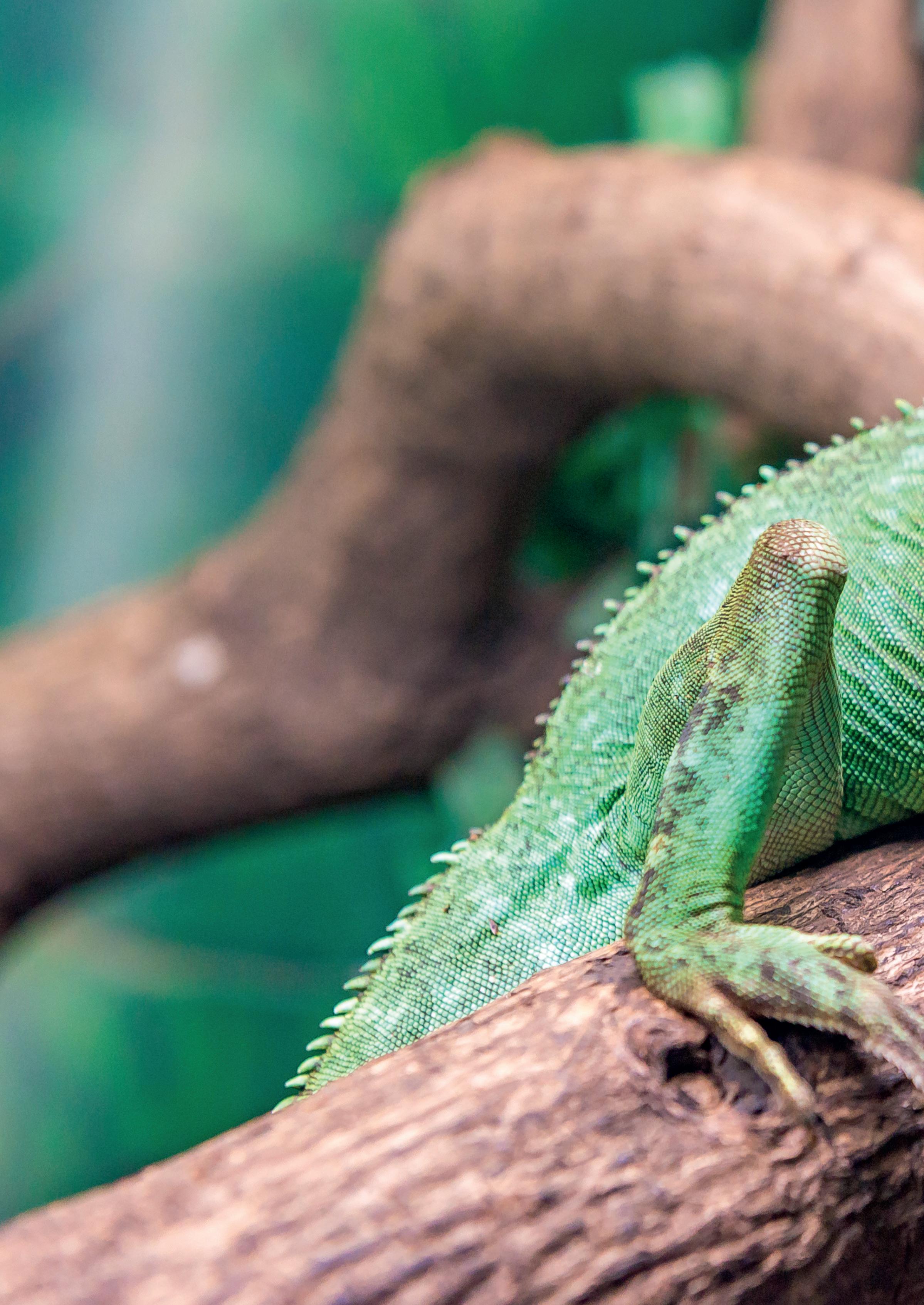
6
 Chinese water dragon (Physignathus cocincinus)
Chinese water dragon (Physignathus cocincinus)
History of dragons
The Chinese water dragon is a large species of Agamid lizard found throughout Southeast Asia. Its range stretches through Cambodia, across most of Vietnam and into southern parts of China. They are the only species in the genus Physignathis, although around eight other species were previously categorised within the genus. Like many of the East Asian ‘dragons,’ they have a majestic appearance, with protruding dorsal scales. Both sexes present vibrant green colouration, variable banding patterns and a prehistoric-looking bone structure. Males can exhibit brilliant crests, followed by long spikes stretching all the way down to their tails.
Despite being widespread and locally abundant, this species is now classified as ‘Threatened’ by the IUCN. Being specialists in closed-canopy lowland riparian forests that sit directly on freshwater riverbanks, their habitat is fragile and at serious risk of deforestation. Adults will often lay exposed eggs in sandbanks close to the water’s edge which are easily disturbed by climatic changes. Despite their potential fragility, a growing invasive population has now been established in Hong Kong and this species is routinely bred in-situ in a ‘captive-farmed’ environment with strong genetics. Conservation of prime habitats and natural populations is key, but this may provide a safety net that contradicts the ‘threatened’ label.
The natural history and wild behaviours of the Chinese water dragon made it a prime candidate for early exports to the exotic pet trade in the 1990s. Almost all individuals in the pet trade are ‘captive-farmed’. This is a very broad term that can mean anything from an outdoor captivebreeding situation to the preservation of natural habitats which wild individuals are collected from. Providing this is properly managed, captive-farming offers an alternative to wild-caught animals, with eggs harvested and professionally incubated. Animals which would have typically been lost to average mortality rates in a wild environment can then be exported to fulfil properly managed quotas, without depleting wild populations. However, this method may prevent true captive-breeding projects from flourishing here in the UK as animals are consistently available and usually for a low price.
Last month, the EU confirmed it would be supporting a proposal made to CITES to list the species under Appendix 2. This would prevent any animals being exported unless the country of origin establishes a science-based official export quota. CITES recognises ‘captive-bred’ (having been bred in captivity for two generations), ‘wild caught’ (caught from the wild or affecting wild populations) and ‘ranched’ (meaning captive-farmed). As a species that readily breeds in
The Chinese or Asian water dragon is one of the more iconic lizards in a captive setting. Their widespread abundance in the hobby during the early 00s has formulated the idea that they are a great pet species, but is this true?
8 MAY 2022
Dragons’ Teeth
Sowing
captivity when given the opportunity, this may result in captive-bred animals replacing the captive farmed individuals, albeit in much smaller numbers. Chinese water dragons are not prolific breeders, producing one clutch of around 12-20 eggs each year. With less availability and increased pricing, it is possible that new keepers will consider more strongly the specialist care and enclosure requirements needed to provide correct husbandry.
Chinese water dragons often have brilliant temperaments and are widely considered to be excellent pets. Although juveniles are often ‘scatty’, adults generally have a docile
nature, will tolerate handling and can even recognise their keepers. Couple this with the fact they are a much more manageable size than the green iguana (Iguana iguana) and it is no wonder that they have remained a popular species since their introduction in the early 90s. As a species that has evolved alongside the entire herpetoculture discipline, issues that were previously prevalent in Chinese water dragons such as MBD and ‘nose rub’ are much less common. However, it is pivotal that keepers create and maintain a suitable enclosure, which for most novice keepers seeking a ‘pet’, is not an easy task.

9 MAY 2022
Thinking outside the box
Creating an enclosure for an adult Chinese water dragon can prove challenging. A custom enclosure is necessary to provide the required dimensions and while these can be commissioned, they cost much more than the standardised sizes sold by most high street pet shops. These must also be made from marine plywood or sealed with a waterproof sealant to maintain the correct humidity levels without damaging the enclosure. Large glass terrariums can be used for hatchling/juvenile dragons, but these are quickly outgrown. Creating a naturalistic rainforest set up of this size, with an aquatic section and multiple basking spots can be very rewarding but equally as costly. In this sense, water dragons offer a more specialist ‘pet’ species.
Michaela Betts BVetMed MRCVS is an Exotics Specialist
Vet at Suffolk Exotic Vets. She told Exotics Keeper Magazine: “We usually recommend a minimum of 4ftx2ftx4ft enclosure size for a single adult with around 80% humidity, but 6ft height would be preferable to allow for more climbing. Enclosures utilising see-through walls or doors are possible, but they need the bottom section to be opaque so that the dragon cannot see through it. We have some keepers who use glass walls but place markers along them to signal where the glass is for their dragon and some who have a deep lip at the base of their enclosure to
clearly show where the edge is. Plenty of cover and hiding spots are really important, so they can tuck themselves away to reduce stress and hide away if they become startled or nervous. They need full-spectrum UV lighting and are Ferguson Zone 2. We usually say a hot spot of around 35°C, cool end of around 30°C, and night-time temperature of 24°C.”
A paper published back in 1999 outlined the necessity to provide ‘choice’ in water dragon enclosures and still provides relevant information today. Roger Meek writes: “Continuous observation of P. cocincinus showed that by thermoregulating carefully, this species is active (i.e. able to remain abroad and vigilant) throughout even the hottest weather. Excessive heat loads are dealt with by microhabitat selection (e.g. by moving within the canopy or by entering water) and behavioural adjustments; primarily, partial basking and shade seeking.” It is therefore vitally important that keepers provide a wealth of shade opportunities and microclimates. For a large, robust lizard, establishing this can be difficult, but lots of overlapping branches, cork bark tubes and sturdy plants can support this. In the wild, juveniles will often bask much higher in the canopy than their adult counterparts. Although a juvenile water dragon will live comfortably in a large, arboreal vivarium, it is worth considering creating a custom enclosure with a foresight of the lizards’ adult size.

10 MAY 2022
Defence mechanisms and medical issues
When creating an ideal environment for an animal, it is important to consider not just their temperature and humidity requirements, but the elements of their surrounding which help them feel secure. Chinese water dragons require a good-sized body of water to plunge into if they feel threatened. Recreating this in captivity requires either great DIY skills or daily water changes of an enormous water bowl. Whilst keepers are quick to ensure specialist species like Chinese crocodile lizards (Shinisaurus crocdilurus), Mertens monitors (Varanus mertensi) or plumed basilisks (Basiliscus plumifrons) have a deep aquatic element to their enclosure, common species are much less likely to receive this provision.
Chinese water dragons can also be very flighty. In the wild, they will leap frantically from their resting place into the water. In captivity, this can sometimes lead to trauma of the face known as ‘nose rub’ where startled or even just curious lizards cannot understand the parameters of the glass enclosure. Michaela continued: “Whilst we do still see "nose rub" in practice, the prevalence of these cases seems to be reduced. The frequency of appropriate husbandry set-ups/diet compared to inappropriate has also improved. With the introduction of the internet, where
owners can access care sheets and advice with more ease, we hope this is due to overall improved husbandry and the needs of this species being met.”
Throughout the years, Chinese water dragons have faced several commonly occurring issues which are slowly being combatted with advancements in herpetological understanding. Nowadays, many of the issues that historically affected Chinese water dragons are much less common. Holistically correct husbandry is key to maintaining the species.
Michaela continued: “The most common ailment that we see with Chinese water dragons specifically would be facial abscesses. This is often in relation to dental disease on clinical examination. Whilst I don't think necessarily preventable, inappropriate husbandry can predispose them to stress resulting in immunosuppression. I also think the activity levels of Water Dragons can sometimes make them more inclined to escape attempts or trauma in the enclosure if it's inappropriate, which could provide a route of infection. Broadly speaking, juvenile reptiles are likely going to be more susceptible to encountering issues due to their developing immune system, the higher demands on their body as they are growing, the development of the sexual and copulatory organs, and the fact that they are more likely going to be kept in

11 MAY 2022
higher density groups so there's a higher risk of disease transmission or trauma from fighting. Adequate space, UV lighting, and dietary supplementation are always crucial, but particularly so during these developmental stages.”
When to see the vet
In the UK, Chinese water dragons are still widely kept. Now, they are presented as much more of an advanced species compared to when they first arrived in the hobby many decades ago. However, keepers should always be ready to visit a vet at the first sign of ill health. Naturally, this makes Chinese water dragons a better pet for someone who can afford to insure their animal and cover any unexpected vet bills. Whilst it’s likely that good husbandry will prevent medical issues, the potential costs of emergency treatment may be many times that of the animal. For some keepers, that will be negligible, but others may be falsely influenced by the price of an imported juvenile water dragon.
Michaela concluded: “Emergency situations where owners should seek immediate veterinary attention would be for: seizures, cloacal prolapse, active bleeding/severe trauma, collapse, any damage to the eyes, breathing difficulties, or if toxicity of some kind is suspected. Less urgent symptoms that would still warrant a vet visit would be changes to appetite or droppings, failure to grow at a normal rate,
swellings or masses, trauma, lameness, weight loss, signs of MBD (such as not holding themselves up properly, rubbery limbs/jaw, tremors), nasal/ocular discharges, and showing active symptoms of something being amiss like coughing or regurgitating. I would recommend seeing a vet for a general health check (along with faecal sample) at least once a year for an assessment.”
So, are water dragons good pets?
Recognising our own limitations as herpetoculturists is extremely important in establishing good animal welfare. The initial draw of Chinese water dragons, with their brilliant crests, intelligent behaviour and docile nature suggests that these animals make excellent pets. However, financial and spatial limitations that the majority of people will face at some point throughout a dragon’s fifteen-year lifespan mean they are not appropriate for everyone. Even the most advanced enclosures will undoubtedly need updating or replacing over this time period and many hobbyists, regardless of their level of experience may find this difficult. With such an eclectic mix of captive-bred animals available to us here in the UK, keepers can find and care for the perfect species for them. For some, a Chinese water dragon will tick every box. For others, opting for a smaller agamid or an entirely different species altogether may provide a more fulfilling herpetoculturist experience.

12 MAY 2022




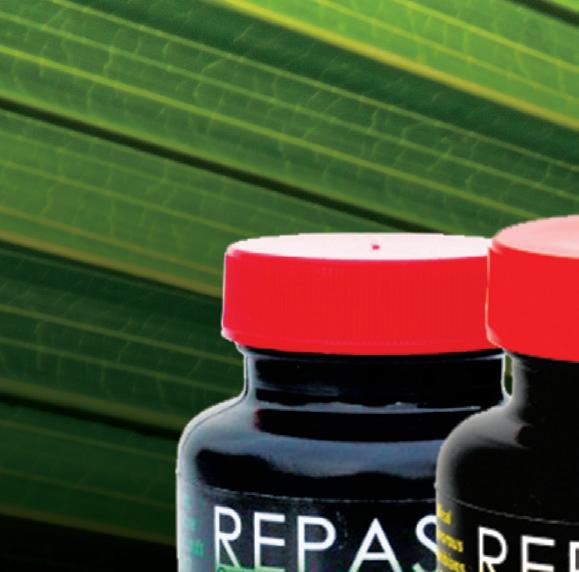
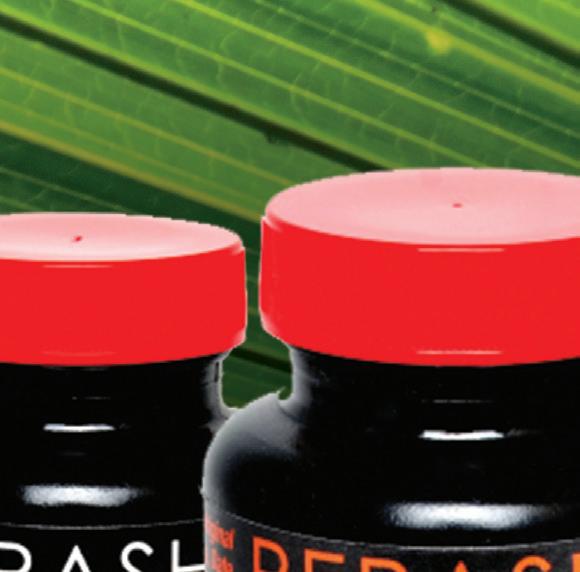

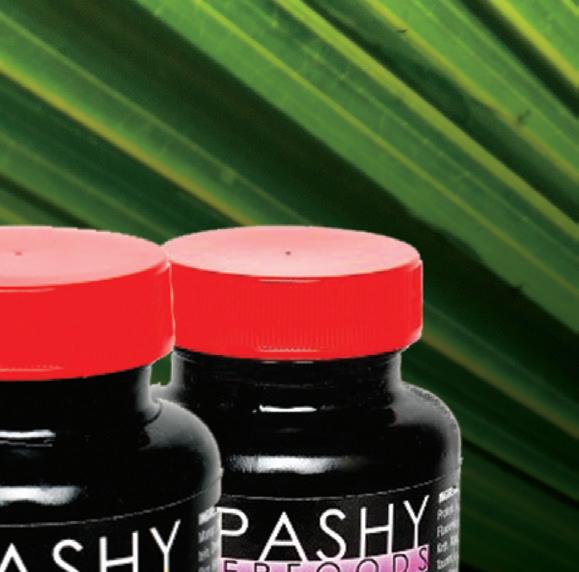

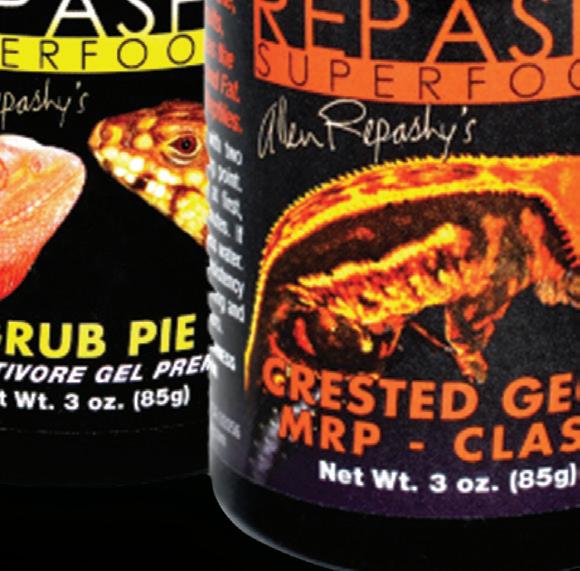













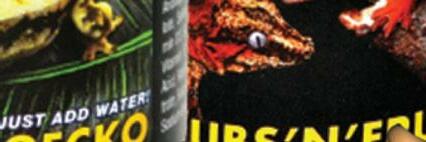




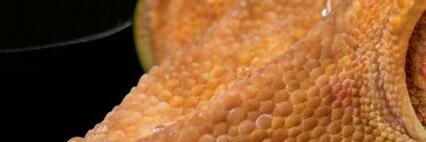

















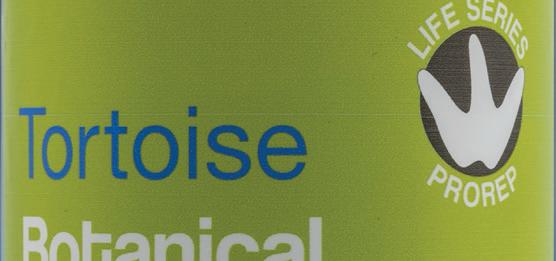




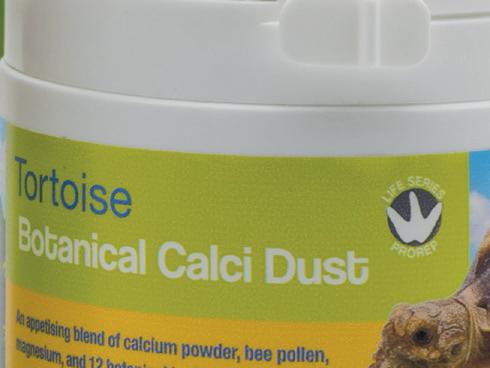




13 SPECIALITY PET PRODUCTS
Superfoods have refined the
range of premix reptile diets, inset gutload formulas and supplements.
with vitamins, trace elements and minerals.
toise Botanical Calci Dust LIFE S ERIES PRO REP A premium calcium supplement. Fortified with magnesium, bee pollen and 12 botanical herbs and flowers which add natural vitamins and minerals to create an appetising dusting powder. Botanical Calci Dust is great for tortoises and any other herbivorous and omnivorous animals which routinely require calcium supplementation. www.pro-rep.co.uk
With 20 years of research and development Repashy
ultimate
Fortified
Tor
SPECIES SPOTLIGHT
The wonderful world of exotic animals
Zebra finch (Taeniopygia guttata castanotis)

The zebra finch is arguably the most popular pet finch and has been a prevalent species in aviculture for decades. There are two species of ‘zebra finch’. The commonly kept Taeniopyga guttata castanotis is found across Australia whereas the rarer subspecies, Taeniopyga guttata guttata is found on the Lesser Sunda Islands of Indonesia. Both species inhabit open grasslands, with the Australian species adapted to arid and semi-arid landscapes across Central Australia.
Zebra finches are seed eaters and will always de-husk every seed they consume. They will eat a wide variety of seeds, except spinifex (Triodia spp.) which is strangely the most populous grass across their distribution. Like many finches, they are sexually dimorphic. Males will have deep red coloured beaks, a teardrop marking stretching from their eyes and speckled plumage down their torso. Females possess the same facial patterns, but with a uniform grey body and an orange beak.
Zebra finches are prolific breeders and given the right conditions, will breed with little to no intervention from the keeper. This has cemented them in the hobby as popular aviary and cage birds. Over the years, many mutations and colour forms have been bred including pied, white, fawn, recessive silver, dominant silver, crested, orange-breasted, Florida fancy and many more. From there, combination mutations have also been bred, making way for a rich morph market.
In the wild, zebra finches live in flocks and are highly sociable. They, therefore, should never be kept alone. However, keeping a pair can result in excessive egglaying, so providing a perch that is surrounded by silk or artificial plants to allow them to roost will prevent nest construction. Wild zebra finches will form nests, even if they are not breeding, so this needs to be as closely simulated in the roosting area without allowing the hen to become broody. A pair of female birds will lay excessively if provided a nest, which can also cause problems. Removal of the eggs will cause the females to lay more, which can result in eggbinding. Birds that are exposed to cold or wet weather, or are particularly young or old are more susceptible to this problem.
The average life expectancy for a zebra finch in captivity is between 5 and 7 years. They are extremely easy to care for, given that the correct conditions are met. They are often housed in large indoor cages, as well as outdoor aviaries (with some protection from the UK climate). Zebra finches are often aggressive towards one another, so a pair is suitable for a cage, or a few pairs for a large outdoor aviary. Where more than six birds are housed together, quarrelling and bullying are likely to occur. In this case, there must be ample perches, feeding stations and hiding areas (plants) for weaker birds to escape. ‘Plucking’ is a common occurrence in stores where zebra finches have been housed incorrectly and many individuals will not recover from this dynamic, meaning the offending bird and victim should be isolated and housed separately.
Species Spotlight
MAY 2022
DRY FOODS, FORMULAS & SUPPLEMENTS











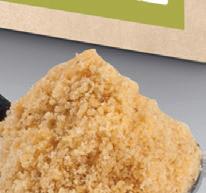











Not all parrot food is created equal. The Psi�acus range of complete parrot foods features over 50 dis�nct products which are widely regarded as the best on the market.
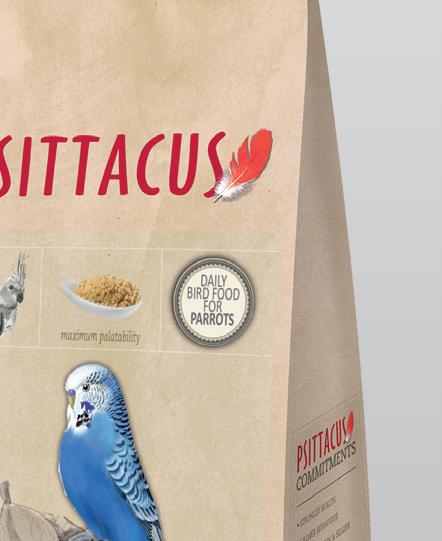







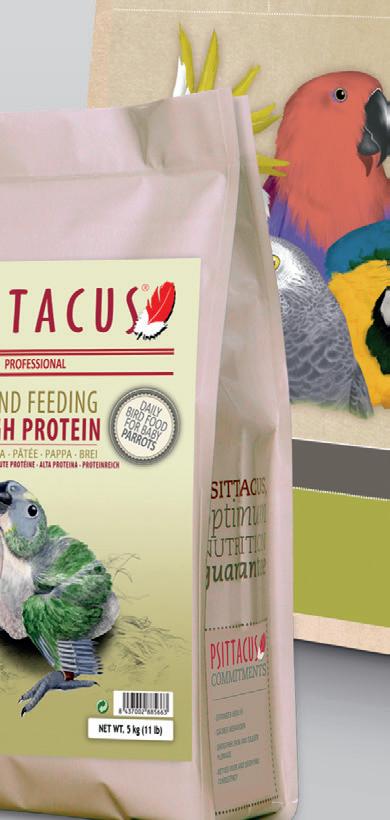




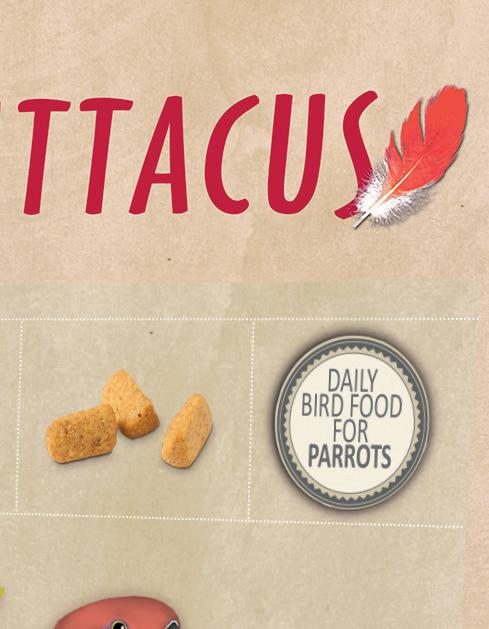


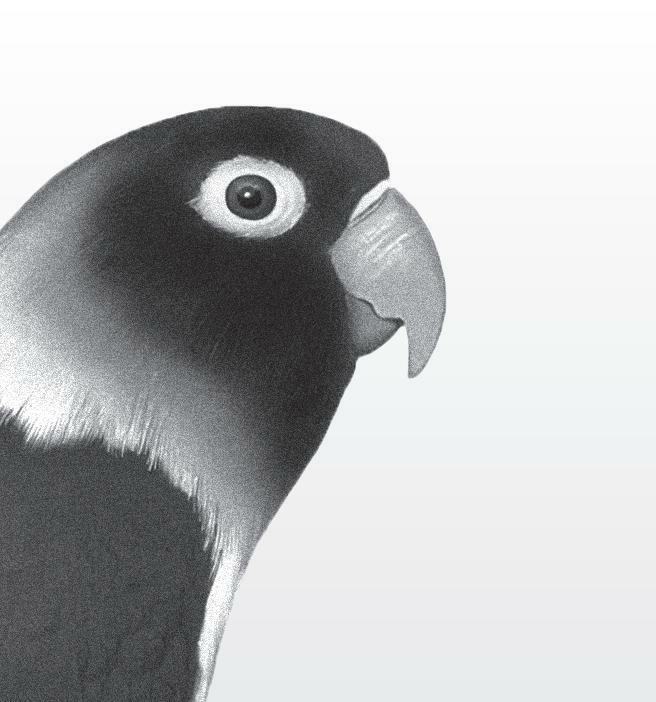
For over 20 years Psi�acus have developed and refined the range at their dedicated research laboratory and extensive breeding facility, along with collabora�on with other respected breeding centres.










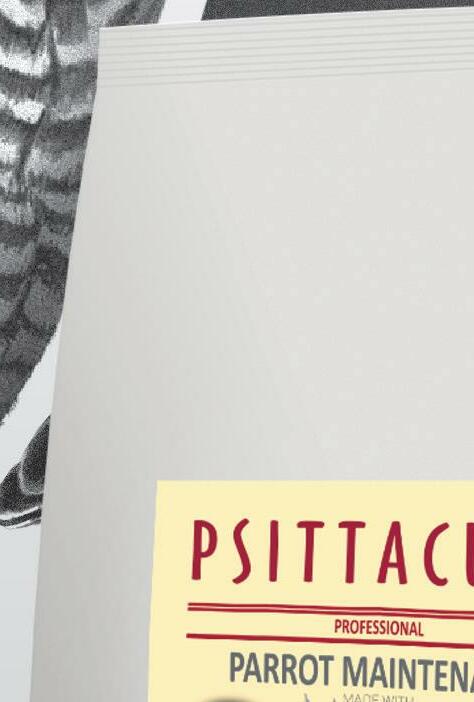

The result is a range of pelleted complete diets with proven benefits including: Speed of growth of the young, its weight and overall development | Improved appetite and increased daily consumption Improved digestive processes | Prevention of the bacterial and fungal proliferations in the craw Improved plumage quality, general appearance and behaviour | Improved reproductive success














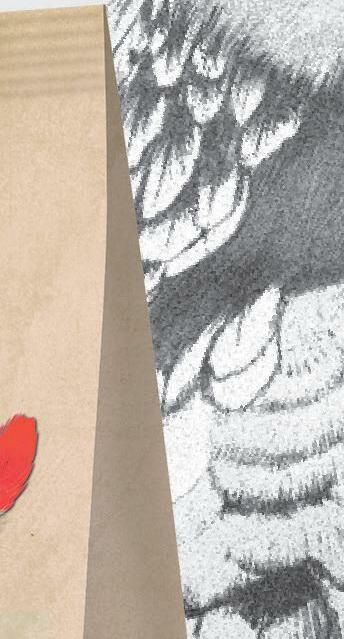








15

NOT EVERYTHING IS GOLDEN
Re-thinking our relationship with goldfish.

Goldfish first appeared in China over 1000 years ago, after being selectively bred from wild silver carp (Hypophthalmichthys molitrix). During the Jin Dynasty, these decorative fish were domesticated and bred to such an extent that several different varieties of ‘goldfish’ now exist. Many people associate carp with large outdoor ponds, with some keepers spending tens of thousands of pounds on ‘koi’. So, why is it we still perceive the goldfish as a commodity to be won at fairs, kept in bowls and after a few years, flushed down the toilet?
Fancygoldfishgirl
Celina Leissner is a Dutch vlogger who goes by the social media handle; ‘fancygoldfishgirl’. Her Instagram and YouTube channel have amassed almost 30,000 followers and have indirectly changed some of the biggest misconceptions around goldfish care. An experienced aquarist that has kept Arowana (Osteoglossum sp.), Oscars (Astronotus sp.), Puffers (Tetraodon sp.) and Betta (Betta sp.), Celina explains “the one fish I never lost interest in, is fancy goldfish.” Celina now uses her 530-litre aquarium to show keepers how fancy goldfish should be kept. She told Exotics Keeper Magazine: “the number one misconception has to be that a goldfish only grows to the size of the tank. That is absolutely not true. Sure, if you keep a goldfish in a tiny bowl and feed it a bad diet, it won’t grow fast, but the organs will keep growing and eventually the goldfish get stunted and will die. This happens too much.”
“Another thing is that a lot of people think that because it’s a goldfish and they are known to be ‘hardy’ fish, they require easy care. If you do some research and give them
the care they need, you’ll have relatively easy fish, yes, but fancy goldfish are not so easy as a lot of people think. They are sensitive and prone to a lot of illnesses and diseases.”
Goldfish varieties
Goldfish come in a variety of appearances, having long been captive bred to produce ‘breeds’ appealing to their keepers. They are generally broken down into two categories which include the ‘common’ types, which are often longer-bodied fish such as ‘comets’ or ‘shubunkins’ and the ‘fancy’ types which are more visually unusual. Although in many cases this distinction is purely aesthetic, some breeds are more predisposed to certain conditions or care requirements. Celina continued: A veiltail goldfish is known for its long fins, ranchu are bred for their eggshaped body and no dorsal fin, orandas are known for their big heads and telescope goldfish (like the black moor) are known for their big eyes. There are many more breeds out there, all with their own characteristics.”
18 MAY 2022 Not Everything is Golden
“There are definitely breeds that require a bit more care and knowledge. The telescope goldfish, for example, has big eyes sticking out of its head so it is more likely to hurt itself. Most telescopes have poor eyesight as well, so they are clumsy and miss food easily. Therefore, you should be careful when choosing tankmates.” Some ‘fancy’ goldfish require just a little extra observation, but others, like certain dog breeds, can face genetic problems.

Celina continued: “The one breed I really dislike and would never recommend to anyone is the pearlscale goldfish or anything mixed with a pearlscale goldfish. Their scales are lifted and doing so, it kind of looks like pearls, hence the name. They are so poorly bred for their looks, that these
fish rarely get old. Maybe not everyone will agree with me; some pearlscales do live a normal goldfish life, but they are definitely more prone to illnesses and diseases than most other fancy goldfish. I also always recommend new keepers to stay away from any ‘short-bodied’ goldfish (like short body oranda). Even though they might look ‘cute’, their organs are squished together, and this will lead to many problems in the future.”
Pearlscale goldfish are reasonably new to the hobby, having been bred in Asia during the 1900s. The calcium carbonate deposits beneath their scales cause a pearlescent appearance and they are widely available in the UK in a variety of colours.
19 MAY 2022
Not Everything is Golden
Silver carp (Hypophthalmichthys molitrix)
Diet
Dr Dave Pool is an expert in fish diets. As well as a degree in Zoology (specialising in freshwater fisheries) and a PhD in carp diseases, he has had an extensive career in the aquatics industry. He told Exotics Keeper Magazine: “By far the biggest misconception regarding goldfish diets and feeding surrounds the amount to feed. They should be given good quality food twice a day, but only as much as they will consume in 1 minute. Your goldfish are good at giving the impression that they are hungry and will pick at the gravel and ornaments in the aquarium as well as rushing to the front the moment you approach. Don’t be persuaded to add more food, if you overfeed the water will become cloudy and polluted with ammonia and nitrite, both of which are poisonous to the fish. However, fancy goldfish varieties require a slightly different approach to feeding. They need a food that is consumed below the water surface, and which softens quickly. This is to make sure that it doesn’t absorb water and swell when it is in their intestines, which can put pressure on their swim bladders and result in them losing balance and swimming on their sides or head up/down.”
Although goldfish feeding is likely to appear relatively straightforward to novice keepers, selecting the right food is paramount. Domesticated species are often seen as having more ‘simplistic’ diets than their more exotic counterparts, with a rich history of commerciality swaying consumers towards brightly coloured or visually appealing foods. In truth, we must look at the wild diet of goldfish and their silver carp ancestors to get a better idea of the type of food most suitable for them.
Dr Pool continued: “Goldfish are omnivores, meaning that they will eat both animal and plant material. In the wild, this would include insects, shrimps, worms, snails, algae, and aquatic plants. In the confines of a pond or aquarium, the goldfish are reliant on us to provide a nutritionally balanced diet that meets their requirements. This can be in a flake or pellet form, but it is worth looking for a good quality food. Foods such as the FishScience brand use insect meal and high-quality ingredients. This has the benefits of being easy to digest and providing all the nutrients that the fish require.”
Aquaria size
One aspect of goldfish care that has improved drastically over the years is the size and shape of the aquaria they are kept in. Many European countries including Germany, Finland and Italy have long banned the sale of ‘goldfish bowls’ due to their spherical shape which is thought to have an extremely detrimental effect on the mental wellbeing of the inhabitant. Furthermore, goldfish bowls are rarely produced in a large enough volume to house even the smallest of fish, let alone one which may grow up to 30cm long. Although Europe is leading the charge in goldfish welfare, the UK government this year dropped plans to ban the use of goldfish as prizes in fairgrounds. Bowls are also less common, but 15L plastic ‘goldfish kits’ are still available.
Celina continued: “Enough swim space is very important for all goldfish. They love to swim, so it’s recommended to get a big tank for goldfish. Here in the Netherlands, we generally use the rule: the tank must be at least 1m long and hold at least 100 litres of water for one fancy goldfish. However, goldfish
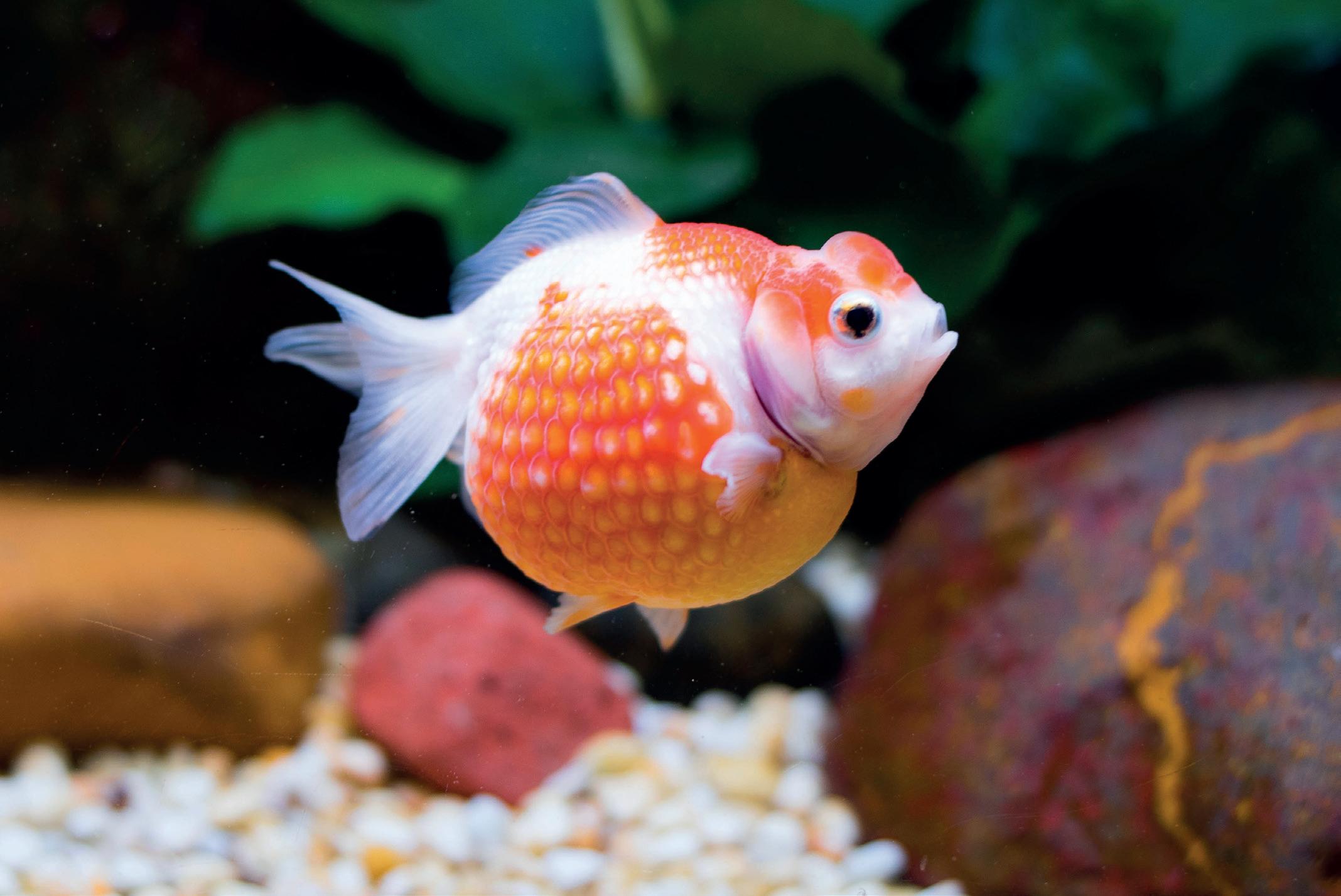
20 MAY 2022 Not Everything is Golden
Golf Ball Pearlscale Goldfish
need friends. So, for each extra fish, you must add 50l of water. Arguably, long-bodied goldfish (like comets and shubunkins) need even more space”
With husbandry standards improving across the globe and social media connecting new hobbyists, our perception of goldfish care is changing. Recently, Bristol council acted by banning the use of goldfish as prizes at a local fair. Individual councils are frequently following in these footsteps “Goldfish welfare is definitely improving” added Dr Pool. “The biggest area being the increased size of aquaria in which the fish are being kept and the demise of goldfish bowls. In the past goldfish keeping in bowls and small aquaria was seen as ok and 45-litre tanks would house 3 - 4 goldfish. New goldfish keepers are now advised to have much bigger aquaria. This allows the goldfish to grow, reduces water pollution and provides better conditions for them to live in. It is also important to remember how long a goldfish can live. 20 years is not uncommon, with the oldest on record being over 40 years old - they need good conditions!”
As our understanding of goldfish develops, common myths that helped justify poor husbandry are being dispelled. For example, goldfish are known to have a memory span that could last over three months. This has been widely documented since the 1960s. Goldfish will respond to colour cues to obtain treats for months after learning the cue. They will also associate certain objects with food, which they remember for long periods. Keepers also report their fish recognising ‘feeding time’ each day, which may be an example of anthropomorphism but certainly aligns with scientific study.
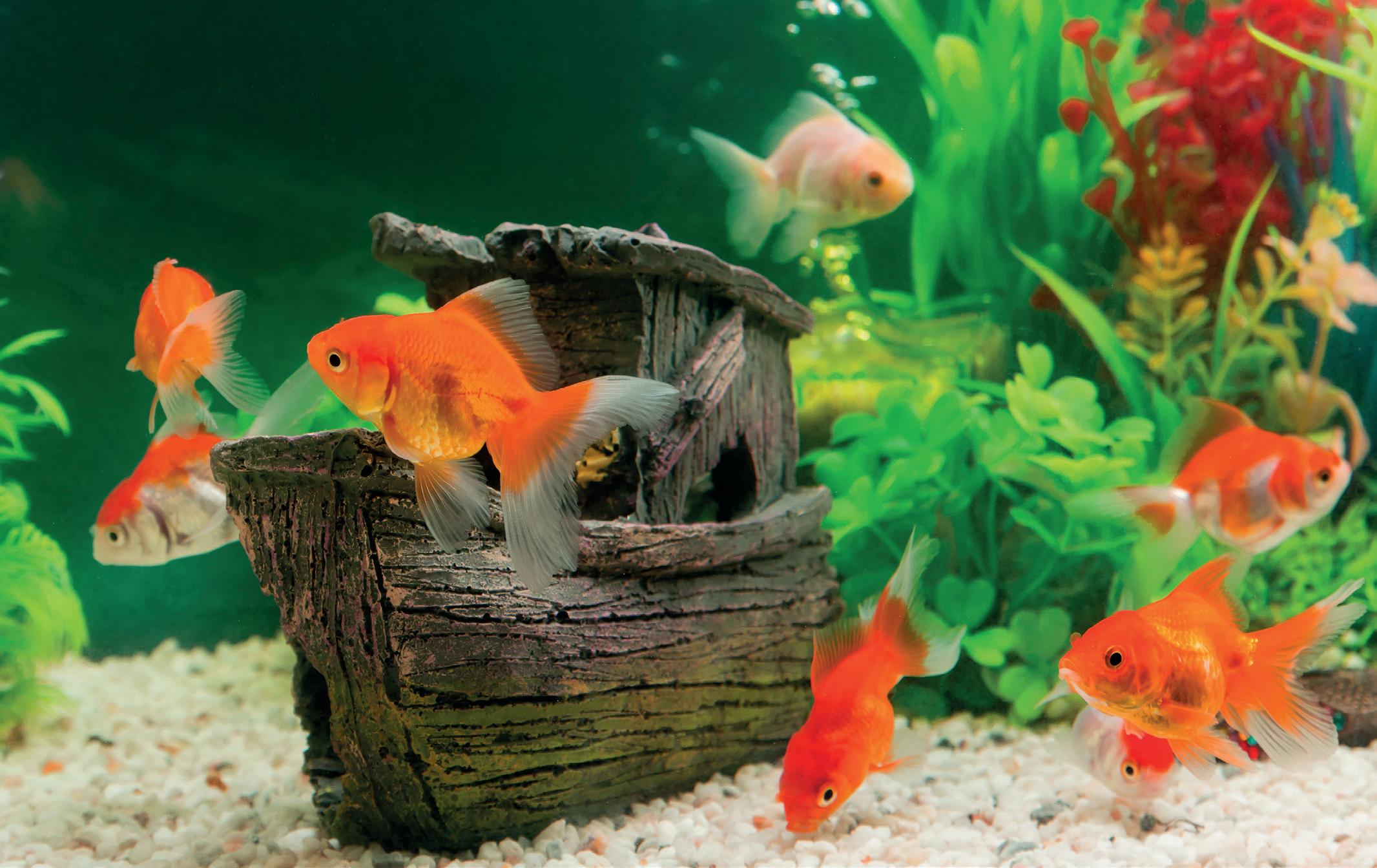
Substrate
Substrate provides valuable enrichment for most species. As descendants of carp, which would naturally feed by inhaling gravel from the pond floor and regurgitating anything indigestible, goldfish benefit greatly from having access to substrate. She added: “without a substrate you lose a lot of surface area where beneficial bacteria can grow, which you need for the nitrogen cycle (so you’ll have to make sure your filter can handle that, or add extra surfaces where these bacteria can grow, like spongefilters).” Some pet-keepers will opt for fine grain gravel or sand to safeguard their animals from any chance of harmful ingestion. Although, a natural substrate which mimics the pond floor, with mixed-sized rocks and gravel is unlikely to cause serious issues and reinforces wild conditions. Celina added: “It’s also a bit harder to keep certain plants if you don’t have substrate. However, there are some plants that do not like to be planted in substrate such as anubias and java ferns which will still provide enrichment in a bare bottom tank.” Using too much sand can also create harmful pockets of methane in an aquarium, so a thin layer to promote natural behaviours is recommended.
Maintenance is an important aspect of any pet care, goldfish included. Many years ago (and sadly still in some cases) goldfish were kept in bowls with no filtration, let alone a healthy nitrogen cycle. Partial water changes and a drop of de-chlorinator were the only maintenance provided. Needless to say, these animals died very early. Now, filtration is commonplace in most aquariums not least because they give the keeper a more aesthetically pleasing and easier-to-manage tank. These fish are huge waste producers” explained Celina. “That means they
21 MAY 2022
Not Everything is Golden







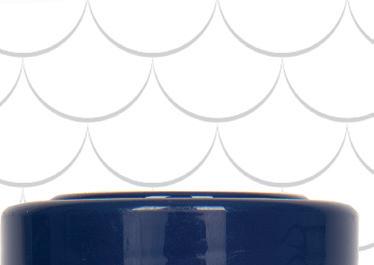





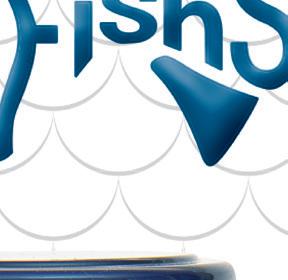









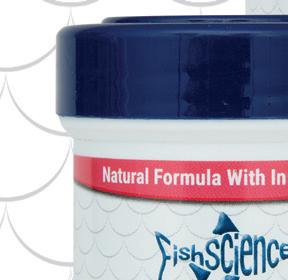
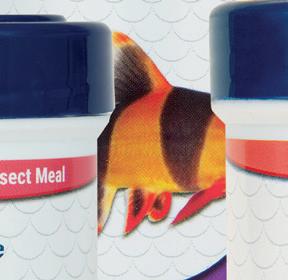

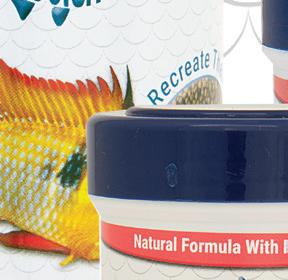

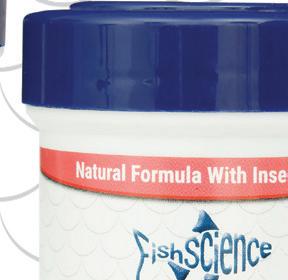

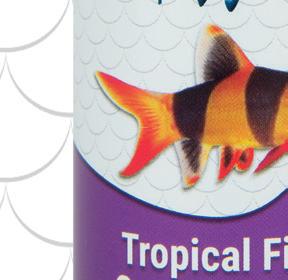

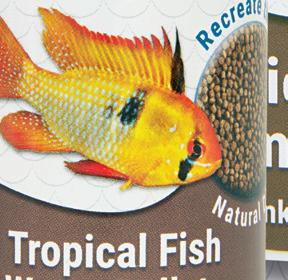
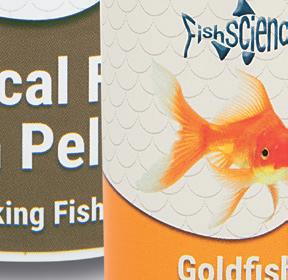






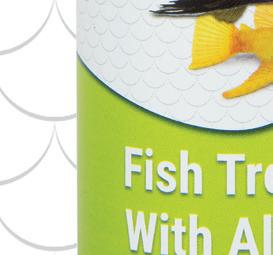


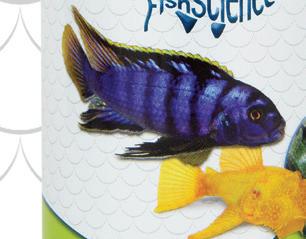

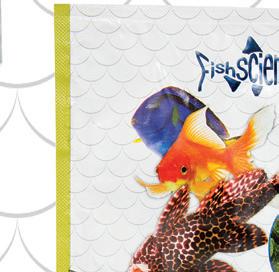


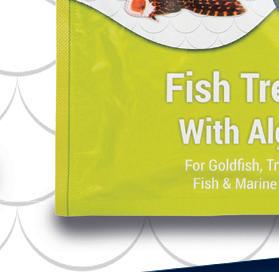





Aquarium Fish Foods with Insect Meal www.fishscience.co.uk Uses cultured insect meal to recreate the natural insect based diet that most fish eat in the wild. Easily digested and processed by the fish resulting in less waste. ‘Best Aquarium Fish Food’ As voted by readers of Practical Fishkeeping magazine Environmentally friendly and sustainable.
require weekly maintenance, maybe more often. New keepers should research the nitrogen cycle and make sure they’re comfortable with water tests. Learning what the correct parameters are and what your fish needs will prevent a lot of issues!”
Water quality and the nitrogen cycle
There is a saying in the aquarist world “you keep the water not the fish”. Essentially, good water quality is the fundamental basis to maintaining healthy and happy fish. The nitrogen cycle is extremely important for keeping any species of fish. Vaguely put; fish produce toxic ammonia in their waste, bacteria then break down this ammonia into less-toxic nitrite, before another bacteria breaks this nitrite down into an even less toxic ‘nitrate’. Of course, the keeper wants to maintain the beneficial bacteria whilst removing excess waste during water changes. Essentially, the keeper is maintaining an entire ecosystem in their aquarium – one which is delicate and can be compared to the bio-active setups in herpetoculture. Each keeper must apply a formula depending on their tank inhabitants, size of aquarium, the volume of water changes and much more. Luckily there are lots of resources online and products available to help a new keeper achieve this.
Advanced keepers will often add more elements to their tank to
Not Everything is Golden
an IV to help regulate their body fluids. I also like to use it for single-cell parasites and/or bacterial infections. Some goldfish owners use salt as a preventative for these parasites as well.”
Colouration
Over time, goldfish coloration can change. This can mean a variety of things but is usually nothing to worry about. Some goldfish can become much paler with age, others can sometimes develop dark patches. This is often relating to genetics, with fancy varieties from conscientious breeders less likely to discolour. Older fish are more prone to turning paler, while younger fish may develop dark spots before the age of two. Neither discolouration influences the health or vitality of the animal. Providing no other symptoms are apparent, an individual fish that has undergone a colour change will usually remain healthy. However, this is not always the case.

Dr Dave Pool added: “If a goldfish is in poor health due to disease, poor water quality or bad handling it may become darker in colour, or dark areas on the body may become more apparent. Irritants of the skin and gills can result in excessive mucus production as the fish tries to protect itself from the irritation. The excess mucus results in the fish appearing paler, with the effect being more apparent on dark areas of the body or against the eye. Such colour changes are usually accompanied by behavioural changes such as gasping, rapid gill movements or flexing of the
“Colour changes caused by poor health are reversible if the cause of the problem is detected and corrected. Disease outbreaks will generally affect a small number of fish and gradually spread to others in the aquarium. Accurate diagnosis and prompt treatment with a suitable remedy will quickly correct the trouble. Water quality problems are often characterized by a larger number of fish being affected very quickly. The cause can often be identified by using water test kits and can temporarily be corrected by undertaking a large partial water change and removing any excess debris.
23 MAY 2022
Not Everything is Golden
Following this, the actual cause of the poor water quality should be identified and corrected. Colour changes caused by poor health will only persist whilst the fish are unwell. After the trouble has been corrected the fish will regain their normal colouration within a few days.”
Fish also gain their colouration through pigments found in their diet. Just like birds and reptiles, vibrancy is dependent on carotenoids and other elements. Most commercial fish foods now contain colour enhancers, though natural sources are recommended to ensure an organic absorption process. Dr Pool added: “If the diet is missing the necessary colour enhancers, the fish will gradually lose their natural colouration, usually becoming paler. In the wild, these colour enhancers are found in most food items, but are more concentrated in water shrimps, algae, daphnia etc.”
Socialisation
Goldfish should not be mixed with other species of fish. In some cases, bottom-feeding species such as loaches will co-habit with goldfish with no ill effects, but this should be reserved for experienced aquarists. In tropical fishes, establishing a good group dynamic can be challenging, but a strong understanding of natural history means we can study wild group dynamics. Goldfish have been bred in isolation from these conditions and often to their physical detriment when compared to other nimbler fishes. Celina added: “Goldfish are social animals, meaning they need friends, they can even show signs of depression when the fish is kept without friends. However, it’s not recommended to mix a common goldfish and fancy goldfish in the same tank for the simple reason that commons are much faster, and they can start to bully the slow fancy goldfish.”
The future of goldfish
Goldfish make wonderful pets and people across the world have known this for centuries. They represent the first (and possibly only) species
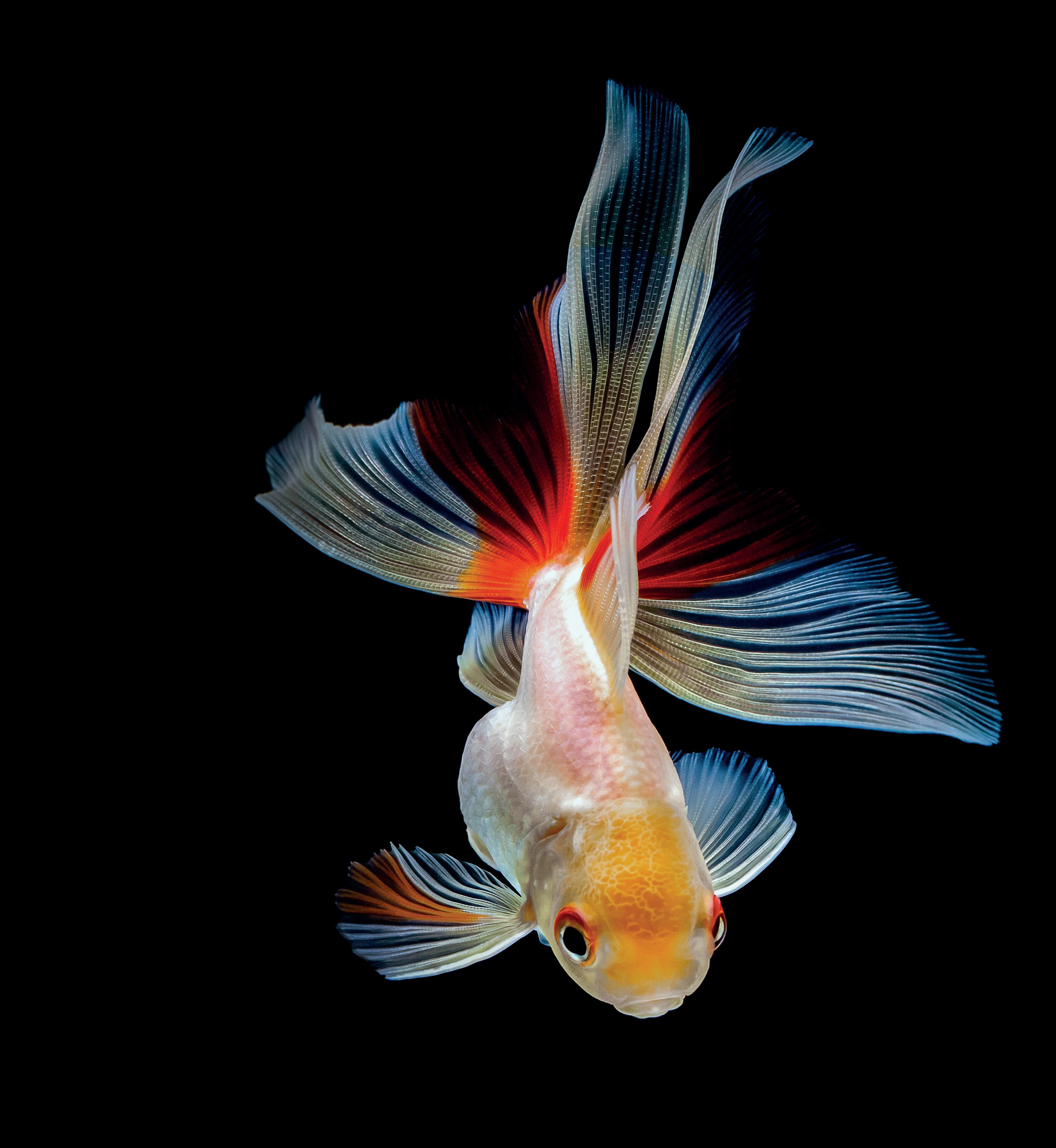
this magazine has covered that are truly ‘domesticated’. Unfortunately, domesticated species are often some of the most misunderstood animals as the “if it isn’t broken, don’t fix it” mentality means long-kept species stagnate in husbandry practices. With exotics keepers often researching the natural history of their animals in-depth, it opens new discussions for how we should be keeping all kinds of taxa.
Celina concluded: “I definitely think there is a need to educate people about the care of goldfish and that is what I try to do. However, that is not why I started with my goldfish page. I started these Instagram pages for one reason: I was obsessed with my hobby and I wanted to share it with other hobbyists.” The passion of niche keepers is often the perfect steppingstone into rethinking husbandry practices and advancing the care of our much-loved animals.
MAY 2022
24
RESEARCHING THE RAINBOW
A closer look at Oophaga granulifera.
Granular poison frog (Oophaga granulifera)
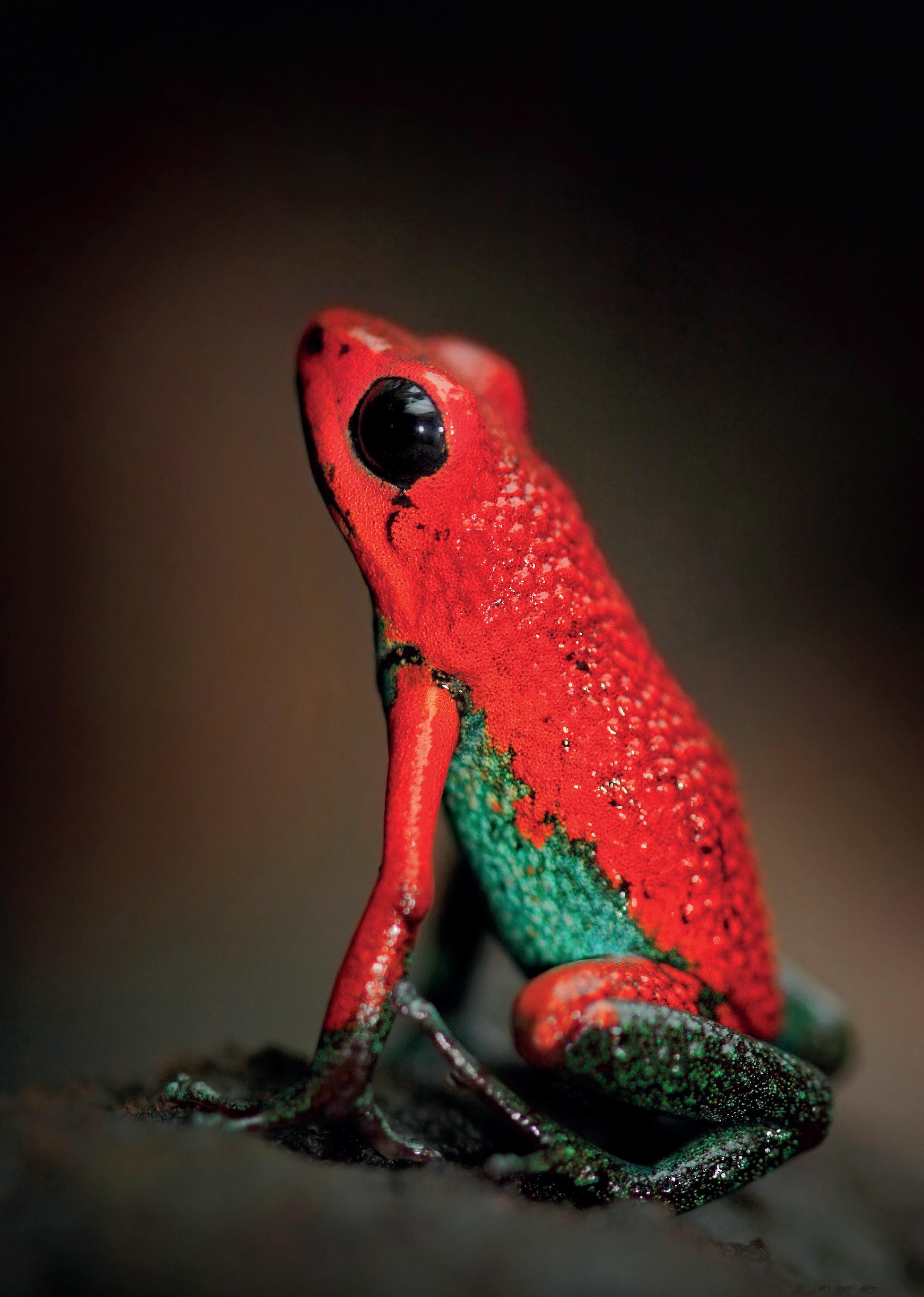
The granular poison frog (Oophaga granulifera) is a vulnerable species, from a tiny pocket of Southwest Costa Rica. Similar in appearance to its Eastern cousin, the strawberry poison frog (Oophaga pumilio), the granular poison frog can be identified by its granulated dorsal skin and metallic colouration. As a species with a restricted distribution, it is rarely seen by international eyes and requires herpers to venture to Central America to witness.
The Oophaga genus
The Oophaga genus is comprised of 12 different species, although one (O. speciosa) was confirmed extinct in 2020 and there is much debate around the distinction between O. histrionica, O. solanensis, O. anchicayensis and O. lehmanni. They range from Central Nicaragua to North-western South America in Ecuador and are some of the most colour-variable of any taxa on the planet. Hundreds of colour phases span these twelve species, which leads taxonomists to believe there are likely to be lots more to be discovered in the future. César BarrioAmorós is a renowned Herpetologist currently working in Costa Rica. He told Exotics Keeper Magazine: “Although the granulifera clade likely only has one species, work is currently underway to recognize two new species in the pumilio clade. There are three species there, one which will reclaim the name ‘typographa’ and the other one is an entirely new species. It is also very likely that other Oophaga could eventually be discovered in Panama, Colombia or Ecuador in the future.”
The name ‘Oophaga’ comes from the Greek ‘oon’ meaning ‘egg’ and ‘phago’ meaning “to eat”. This name comes from the genus’ well-documented paternal habits that involve the female laying an infertile egg within the nesting pond (usually within a bromeliad or curled leaf), to feed the young tadpoles. When the water within the plant dries out, one of the parents (depending on the species) will take the tadpole on their back and move them to another, more suitable pond. Tadpoles also move in complex patterns, like a dance, to signal to the mother that they are hungry. This complex breeding behaviour may at first seem endearing, but some species such as O. histrionica have been observed feeding on the eggs of rival females.
Of the nine currently recognised species, all except the strawberry poison frog (O. pumilio) are threatened and seven are either ‘Endangered’ or ‘Critically Endangered’ according to IUCN data. Various institutions across the globe are currently captive-breeding populations of these species. Their incredible ability to care for their own offspring
26 MAY 2022 Researching the Rainbow
means that providing a suitable habitat is created and environmental cues are used to prompt breeding, it is not uncommon for Oophaga sp. to reproduce in captivity without any intervention from the keeper.
Granulifera
Oophaga granulifera is an extremely territorial species. Males will defend the oviposition sites from rival males but have also been documented attacking females they perceive as a threat.
They are a bold species, with males calling incessantly from an average of three different locations within their territory. Calling happens most frequently in the early hours of the morning. César continued: “Oophaga granulifera is a species of poison frog most engaged to rocky creeks and the surrounding rainforest”. These rocky creeks often host fast-moving streams at low elevations. However, it has been reported that this species can survive in secondary rainforests and recovering plantations, in small numbers.

Conservation threats
In-situ research can sometimes paint a slightly different picture to globalised surveys. Despite being ‘threatened’ the granular poison frog is considered locally abundant. However, the tiny distribution of the granular poison frog makes it a very fragile species. With much of the West Coast of Costa Rica under threat from palm and pineapple plantations, just a small amount of agricultural development in the area could destabilise populations of Oophaga granulifera. This, coupled with
27 MAY 2022
Researching the Rainbow
Strawberry poison frog (Oophaga pumilio)
the fact that this species continues to be illegally harvested from the wild, adds to the need for education and further research. César continued: “This species is not endangered, but on a local level some populations are at risk due to habitat destruction. For example, the yellow phase of O. granulifera used to be very common around 6 years ago, now it is very difficult to spot. Other threats include poaching. This used to happen quite frequently and probably still is. However, the laws in Costa Rica are quite strict so poachers tend to think twice before they come here!”
Eco-tourism is also providing some very positive results in educational outreach. As Co-Founder and Scientific Director of CRWild, César leads expeditions in Costa Rica to allow tourists to observe and photograph the species. Although captive-breeding projects for some Oophaga species have been well established in Europe, eco-tourism allows naturalists to better understand the diversity of species and colour morphs in each area. It also gives herpetoculturists a better idea of the in-situ habitats that certain species thrive in and adjust their husbandry
accordingly. “It’s great to show people the species we have here” added César. “Every day I see more people interested in all kinds of nature and many are herpers of froggers. It allows me to offer expeditions focused solely on frogs!”
Colour variation
“There are at least seven known locales of this species, and they vary only in colouration” added César. This is in stark contrast to the world’s most variable animal, the strawberry poison frog. In Oophaga pumilio over 100 known variations exist, with each population being quite easily tracked to individual riverbeds, islands, and locales. Oophaga granulifera has just a handful of colour variations, which change gradually across its mainland range. The two extremes (which are still only around 120km distance from one another) are extremely distinct. The most commonly seen is the ‘Golfito’ which can be found throughout the Osa Peninsula which is a popular eco-tourist destination. The ‘Quepos’ variation has an entirely different set of colours and is found only in Quepos and the neighbouring areas.

28 MAY 2022
The recorded colour morphs of this species include:
Golfito – Found in the most Southern regions of the species’ distribution. Red dorsal with blue/silver legs and underside
Dominical – Found in the lowland forests surrounding the town of Dominical. Mostly red, with blue/silver legs
Barú – Almost entirely red with silver feet
Parrita – Bright green to olive upper body and dorsal with blueish feet
Quepos – Yellow with blue or greenish feet
Savegre – Dirty orange colour, like a combination of “Uvita” and “Quepos
Poison frog morphology
Studies into the variation in colour of O. granulifera hypothesise that a mix of aposematic and cryptic behaviours in response to predation has caused each population to display slightly different colours. In 2013, Beatriz Willinck et al observed 99 frogs from four separate populations, one with a green dorsal, another with a red dorsal and two interspecific samples which were at the time called ‘San Rafael’, ‘Portalón’, ‘Metapalo’ and ‘Barú’. The researchers discovered slightly different behaviours in response to a bird-like decoy, observing that the brighter coloured frogs (with red dorsals, further south in their range) called 15% of their time, whereas the green variations called only 6% of the time. Intermediate coloured frogs called for a similar amount of time to the red population. Green frogs also had a much lower foraging rate than the red population. However, the red frogs were more “prone to escape” than the green population.
The study reads: “Altogether, our results show clear colouration and behavioural differentiation between red and green populations. The intermediate-red frogs resembled the red frogs in most measures of conspicuousness, except in their propensity to escape and some brightness contrasts. However, the intermediate-green frogs exhibited high colour contrasts, movement and foraging rates, displayed intermediate calling activity, and were similar to the green frogs in terms of brightness contrast, calling exposure, and propensity to escape. Recently, it has been proposed that intraspecific divergence in colour can be linked to distinct antipredator strategies by means of combinations of coloration with sets of behaviour that both vary in conspicuousness. Our results support this general finding and highlight the occurrence of intermediate strategies, which are not purely cryptic or aposematic.”
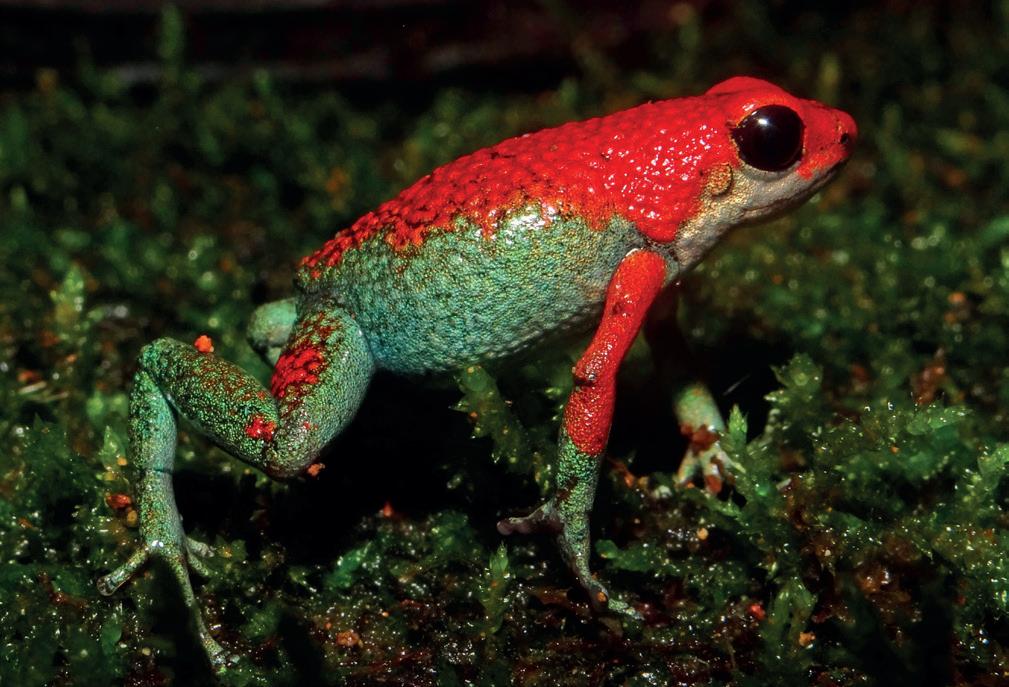
As research into the variability of poison frog colouration continues, it has been widely documented that the brightness of a species is an honest indicator of their toxicity. For example, a study looking at O. pumilio in 2012 by Martine E Maan discovered that across 10 populations
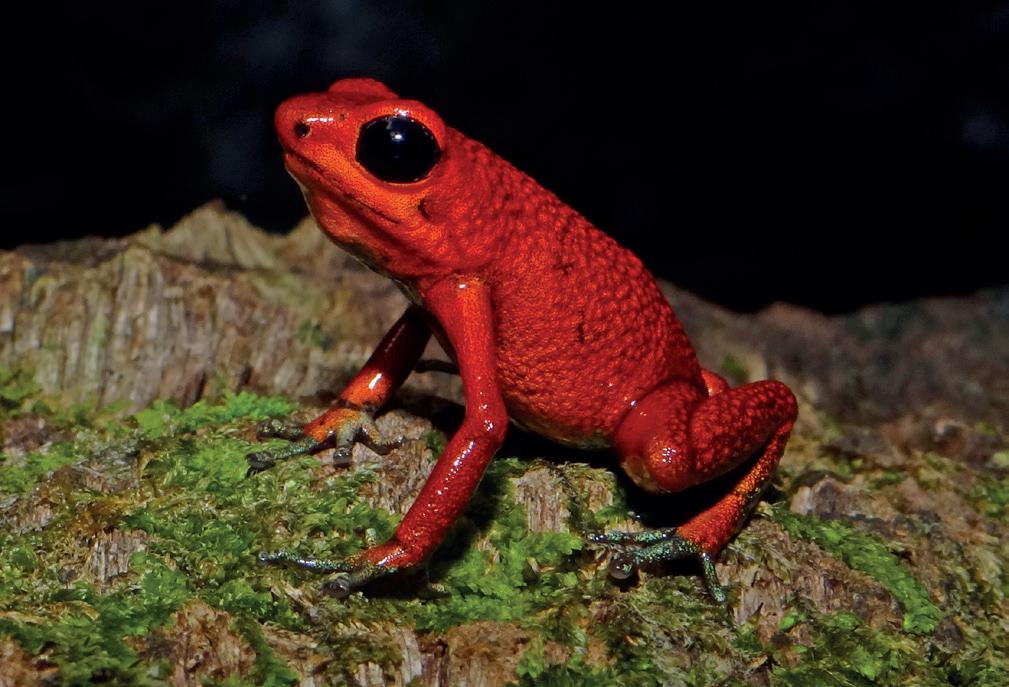


29 MAY 2022
Researching the Rainbow
César Barrio-Amorós/ CRWild/ Doc Frog Photography
César Barrio-Amorós/ CRWild/ Doc Frog Photography
César Barrio-Amorós/ CRWild/ Doc Frog Photography
César Barrio-Amorós/ CRWild/ Doc Frog Photography
Researching the Rainbow
of O. pumilio, using a mouse-based toxicity assay, the brightest populations were by far the most toxic. Interestingly, this varied even more so across potential predators as the study claims: “from the view of three potential predator taxa, as well as conspecific frogs, using taxon-specific visual detection models and three natural background substrates. We find very strong positive relationships between frog toxicity and conspicuousness for bird-specific perceptual models. Weaker but still positive correlations are found for crab and O. pumilio conspecific visual perception, while frog colouration as viewed by snakes is not related to toxicity. These results suggest that poison frog colours can be honest signals of prey unpalatability to predators and that birds may exert selection on aposematic signal design.”

Herpetoculture and eco-tourism
The first reported captive-breeding of O. granulifera happened in 1992, meaning there are likely to be some captivebred individuals out there. However, as Oophaga species (particularly granulifera) inhabit countries which have outwardly banned the export of any and all fauna, keepers should be extra vigilant where they source their animals. In the UK, it is highly likely that there are no specimens of this species in captivity, so new animals should be treated with
serious scepticism. With herpetologists providing amazing eco-tourism opportunities to witness this species in the wild, enthusiasts are encouraged to engage with this species in-situ. Where there is no immediate need for ex-situ conservation, eco-tourism can play a vital role in observing and studying obscure and little-known species and is accessible to all. More information on touring Costa Rica as an amphibian enthusiast can be found at www.crwild.com.
MAY 2022
ARACHNID WARFARE
 How 15,000 scorpions and spiders are vying for position on the Isle of Sheppey.
How 15,000 scorpions and spiders are vying for position on the Isle of Sheppey.
Sheerness is a typical Southern harbour town in the county of Kent. It sits on the Isle of Sheppey and has welcomed international boats and trade since its construction in the 16th Century. During this time, it was built as a fort and ironically remains a place of conflict for a much smaller battalion of non-native arachnids.
In the red corner…
Yellow-tailed scorpions
(Euscorpius
flavicaudus)
The yellow-tailed scorpion is the most Northernly occurring scorpion in the world. They are found across Southern Europe and North Africa, but for the last 150+ years have also been found in the dockyards of Sheerness. In fact, the first recorded sighting of these predatory arachnids was back in 1860, though it was thought they could have been living amongst the imported masonry and dock walls much longer. They are a small species, growing just a few centimetres long and have distinct black abdomens with yellow legs and a bright yellow stinger (telson). They are not considered dangerous, but as with many venomous animals, can cause allergic reactions. Some researchers believe that these stings may be more painful in the earlier parts of the year, due to highertoxicity venom in animals that have remained dormant throughout winter.
Despite the estimated population of yellow-tailed scorpions in Sheerness reaching upwards of 15,000, it is thought that these are a reasonably low-impact non-native. In fact, in Sheerness, they have not spread much further than the dockyard walls that they inhabited over one hundred years ago. Being a hardy species that requires just a few isopods or similar sized inverts to feed on each year, they can remain in the walls relatively undisturbed without the need to colonise new areas.
Jack Perks is a Professional Wildlife Filmmaker with a passion for non-native species. He told Exotics Keeper Magazine: “I don’t think there are any plans to get rid of them. They’ve been on Sheppey for over 100 years now and they haven’t spread elsewhere. I would think they need quite specific requirements such as rocky areas to tunnel out of the cold, so they wouldn’t do too well in open areas. Once they get to a harbour wall, they’re kind of marooned there.”
“I’ve always had this fascination with non-native species. They’re unusual and these things shouldn’t be here. Many of them are not good, but some of them have very low impact
32 MAY 2022 Arachnid Warfare
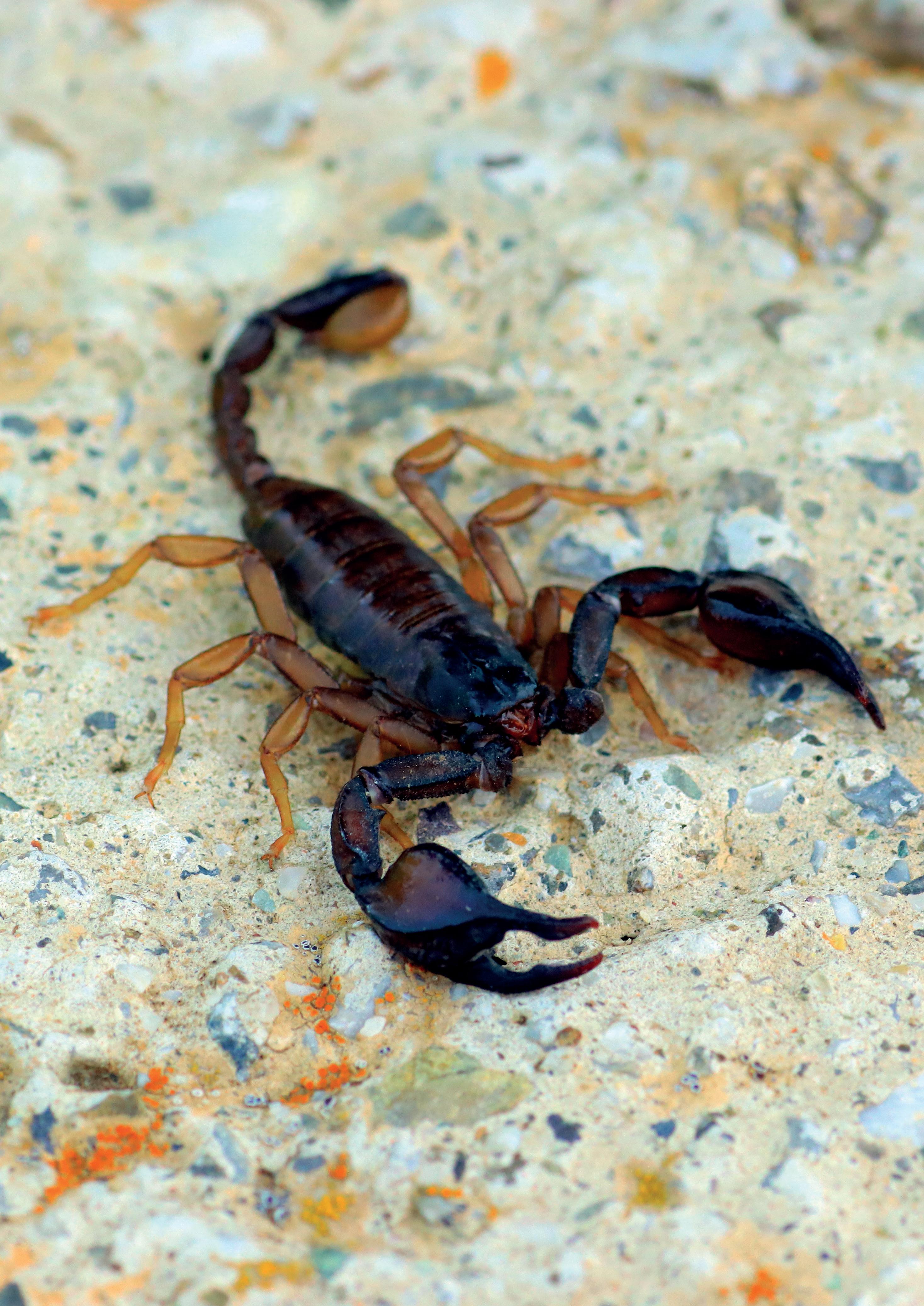
too. So, I think it’s fascinating how these animals can fit into ecosystems for good or for bad. There are a lot of species that people just don’t know we have in the UK. On the night we made the documentary, we also saw grasshoppers on the wall, some spiders, and other bits, so I would say these scorpions are reasonably low impact. I don’t think we have any risk of scorpions taking over Britain any time soon.”
For naturalists wanting to catch a glimpse of these scorpions, it is quite straightforward. “We saw around a dozen in one night” added Jack. “The biggest challenge was actually trying to find out where they are. Nowhere actually tells you exactly where they are, so we had to find these harbour walls and then wait until it got dark. The trick is to use a UV light because they really do glow. Even if they’re right down in a crack you can still see them. Without a UV torch, you would really struggle to see them.” Like many other species of scorpions, E. flavicaudus glows brightly under UV lighting. It is a phenomenon widely documented in nature series but often only recorded in exotic locations across the world. However, members of the public here in the UK can witness this incredible natural history observation with just a cheap UV light purchased online.
Jack continued: “I don’t think anyone has a concrete answer on why they glow. There are lots of theories. Some suggest it’s to find a mate, some think it is for protection, others think it could be to draw moths in to feed on. I would imagine this would vary between species too. For now, nobody really knows.”
Yellow-tailed scorpions are not frequently kept as pets in the UK, considering that they can tolerate our climates. Invasive species are also not protected by any harvesting laws, but it is illegal to release an invasive species back into the wild. This caused controversy when a local shopkeeper was suspected of releasing these arachnids into Ongar Station in the 70’s to bring more footfall to the area.
The theory worked as the BBC covered ‘Ongar’s scorpions’, which brought a lot of people to the small Essex town. The population is thought to have since died out. The practice of harvesting these invasive scorpions to study is still reasonably uncommon, with educational facilities and schools opting to take trips to Sheppey to photograph the inverts instead. Jack continued: “It’s surprising that they’re not more commonly kept. A lot of people don’t know exactly where they are which helps, but there’s so many of them that they aren’t at risk. It’s also not just Sheppey, there’s some in Dorset and a few other Southern coastal towns and probably lots of populations we don’t know about. They’re also tiny! Only around 2 inches long, so when you compare that to an emperor scorpion (Pandinus imperator), they’re really not that impressive and maybe that’s why people don’t keep them. I would assume that they would be quite hardy if they can survive our winters, but perhaps they have very specific requirements.” This species is also not frequently bred in captivity. The gestation period for E. flavicaudus is up to 14 months and as a cannibalistic species, there is very little incentive for hobbyists to breed a potentially difficult species.

34 MAY 2022
In the blue corner…
Tube web spider (Segestria florentina) In the same Southern-facing wall that stretches around the dockyards is another population of non-native ambush predators who have been actively predating on (and preyed upon by) the scorpions. Colloquially named ‘tubeweb’ spiders, Segestria florentina is a species of spider from the Mediterranean which is much larger than our native Segestria sp. Females can reach over 22mm in body length, making them Europe’s largest Segestriid spider. They are best characterised by their iridescent green jaws (chelicerae). This species will create an intricate network of webs that form tunnels into the crevices of the wall, where it will wait in ambush for unsuspecting insects and small scorpions to get too close.
Jack continued: “We could see spiders that were being preyed upon by the scorpions, but when we investigated the webs of the spiders, we saw that the spiders were eating them too. We saw lots of scorpions chewed up in the spider webs, so it looks like it’s tit for tat. Very much like a turf war to be honest! They will populate different areas down the wall, which is an interesting dynamic for two nonnative species.”
The tube web spiders are thought to have arrived in the UK slightly earlier than the scorpions, with sightings dating back to 1816. They are also much more widespread than the yellow-tailed scorpions, having managed to populate a large percentage of Southern England. They are frequently found in urban environments, including new buildings, and have become ‘naturalised’ to the UK climate. Their native range stretches across most of Western Europe and as far north as Denmark, suggesting this colonisation is not surprising. Like the scorpions, they were thought to have been brought to the UK as stowaways in trade ships.

Other invasives
There are three species of tube spiders in the UK. The non-native S. florentina, the common and widespread S. senoculata and the extremely rare S. bavarica which is isolated to tiny populations on the very extremes of the Southwest coast. The British Arachnological Society writes: “All three species live within their silken tubes although, when mature, males leave their tubes to search for females. Consequently, unless a female’s habitat has been disturbed, any large tube spiders found wandering are likely to be adult males. After mating, eggs are laid by the female within the tubular retreat; all three species are thought to take two years to reach maturity. Adults are found throughout the year with a peak in spring/summer. Young spiders set up homes of their own but make much smaller tubes. There is no evidence that tube spiders can excavate holes so it’s a question of finding a place to suit your size.”
Arachnid Warfare
Grey
and signal
There are over 3500 non-native species of plants and animals currently living in the UK.
squirrels (Sciurus carolinensis)
crayfish
(Pacifastacus leniusculus) may be most commonly known, but the following species are also considered invasive:
Harlequin ladybirds (Harmonia axyridis)
Cabbage white (Pieris rapae)
Scarlet lily beetle (Lilioceris lilii)
Landhopper (Arcitalitrus dorreini) Rosemary beetle (Chrysolina americana)
It is also possible for naturalists to catch a glimpse of these stunning spiders. Jack added: “Segestria florentina are these great big spiders with bright green fangs, they’re amazing things. If you go to the location in the summer, I’d be fairly surprised if you didn’t see them too. The way to get the tube web spiders out is to take a tuning fork down, ting it and place it against their web and they’ll come out to grab it.” These can make for some very interesting photo opportunities without disturbing the animals, or their homes, too much.
Exotic intrigue
Although non-natives can sometimes have devastating impacts on fragile ecosystems, historical accidents have in some cases led to exotic species establishing unobtrusive populations across the UK. This is something that should never be encouraged, and all keepers should be responsible for their own biosecurity measures to prevent new non-native populations from forming. However, the observation of these animals in the wild can sometimes lead to beneficial education programmes. For example, many
local schools in the Kent area will operate trips to see the ‘scorpions of Sheerness’, whilst tourists will travel far and wide to document these interesting animals. Businesses in the local area have even named themselves after the much-loved arachnids, giving the local community newfound respect for a species that they would have otherwise never encountered. Exotics enthusiasts in the UK, from photographers to vloggers and hobbyists to arachnologists can find the most exotic wildlife experiences here in the UK, with just a little bit of research.
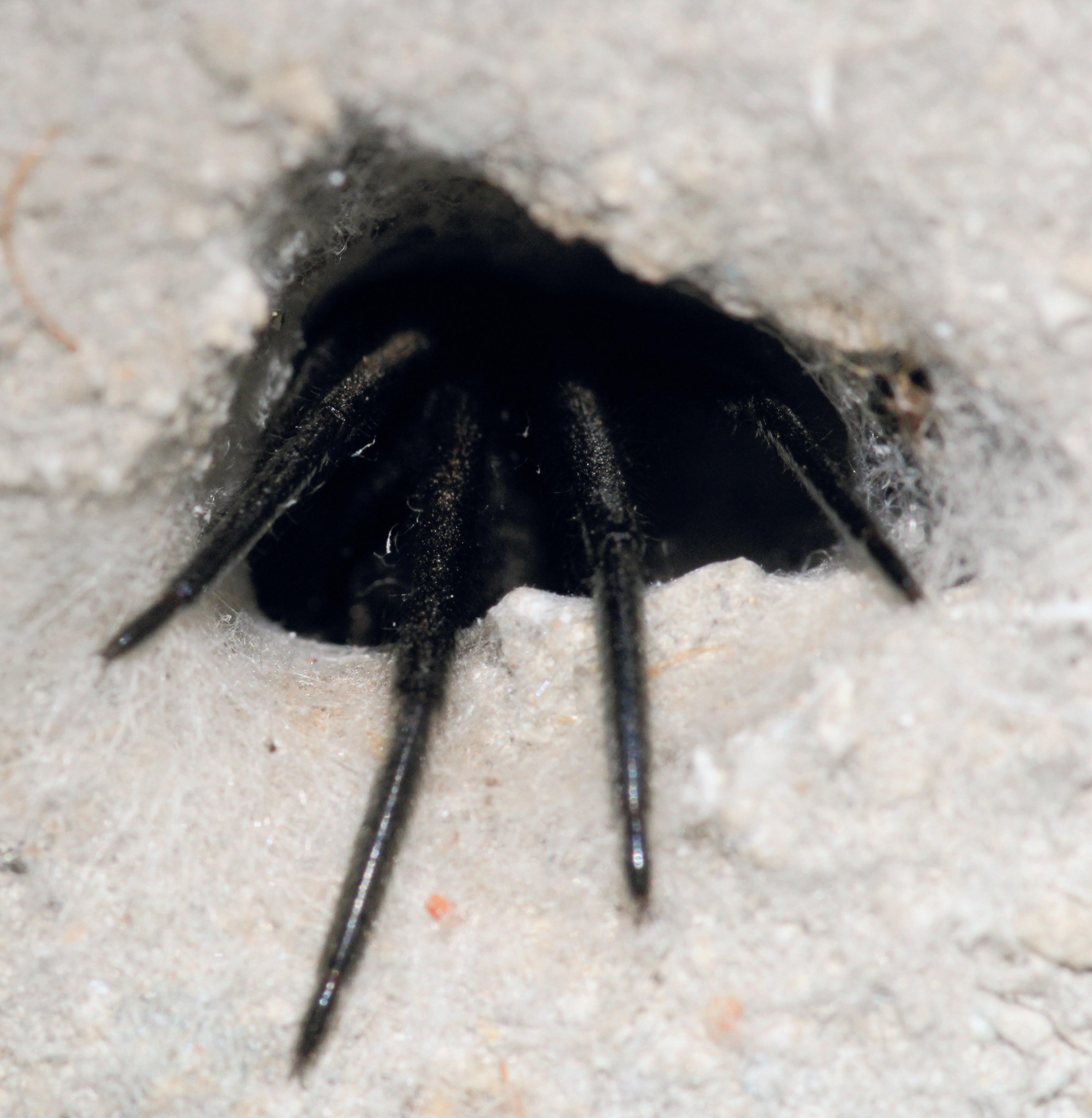
36 MAY 2022


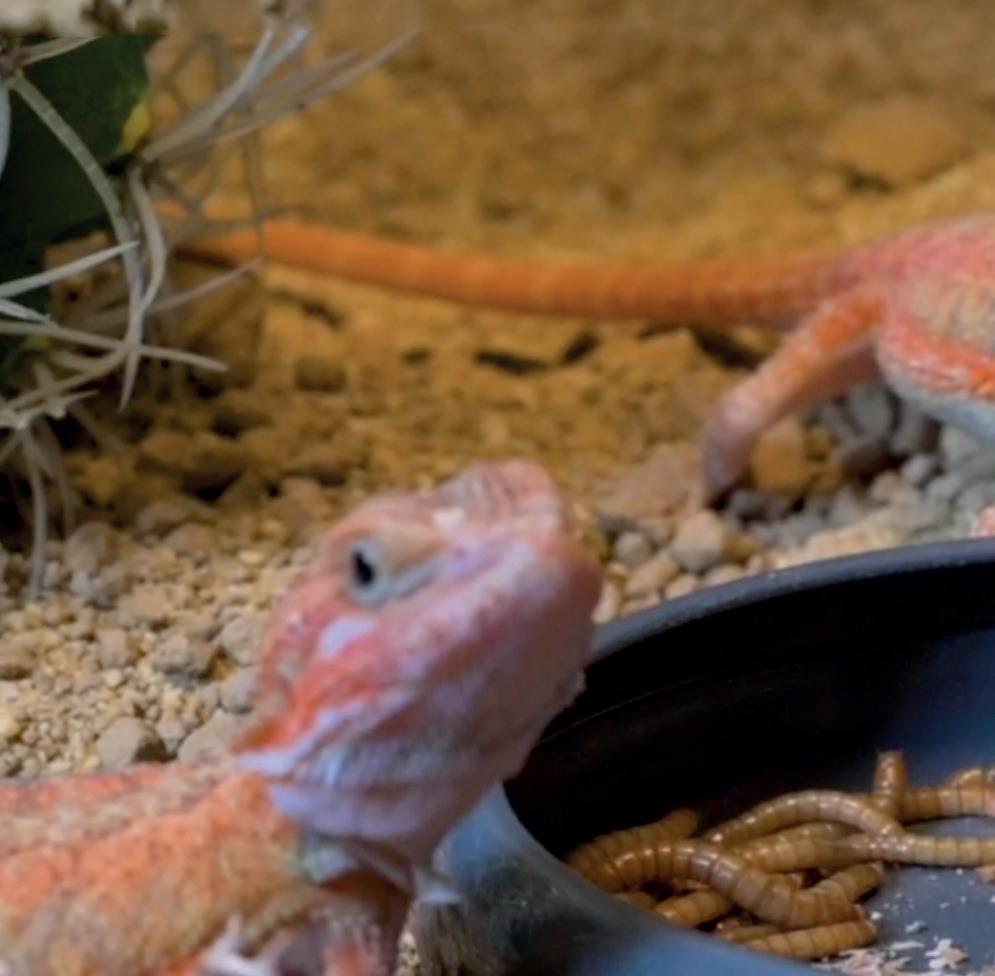





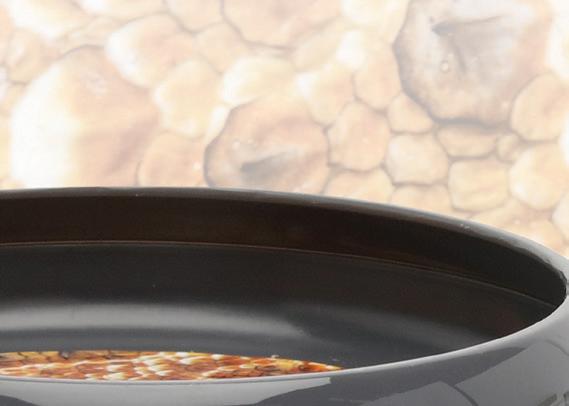
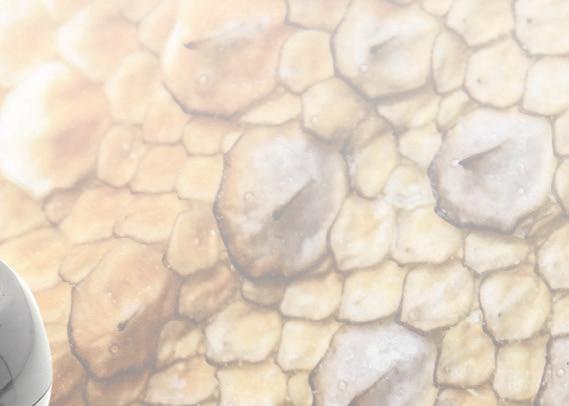
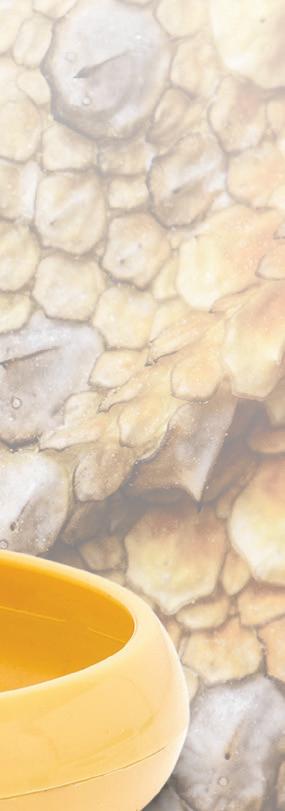
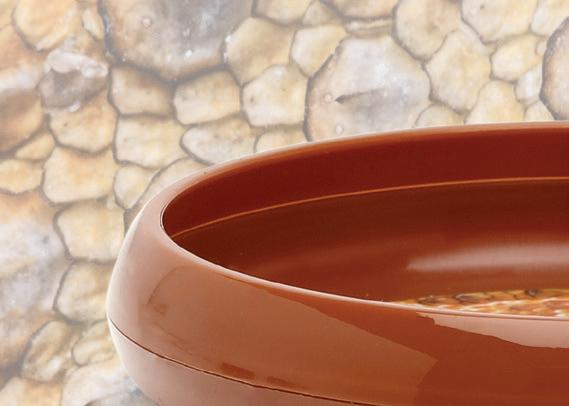



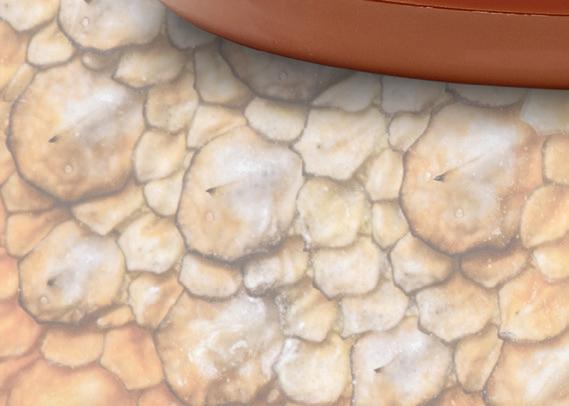

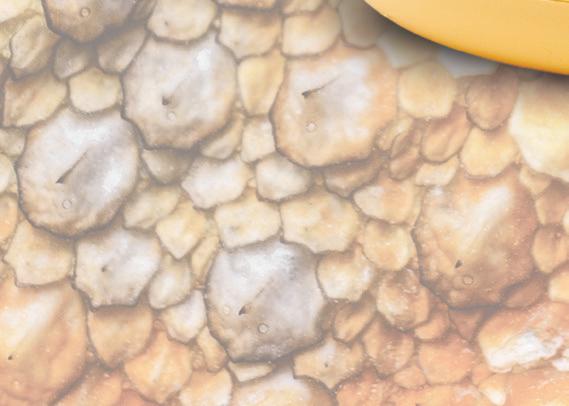
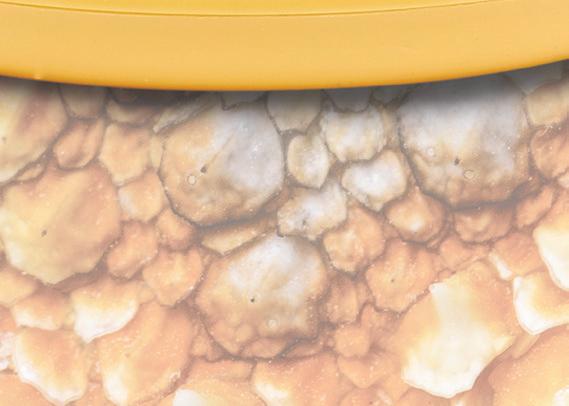

HAND HYGIENE PRODUCTS
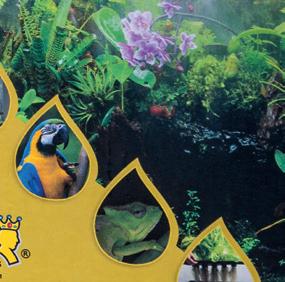
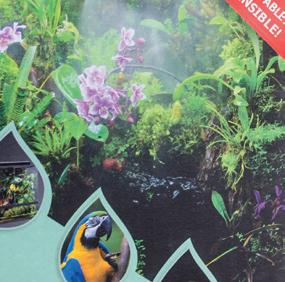
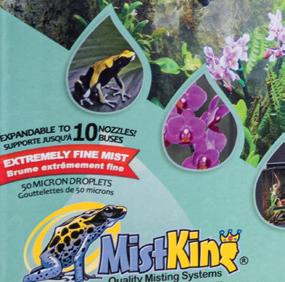














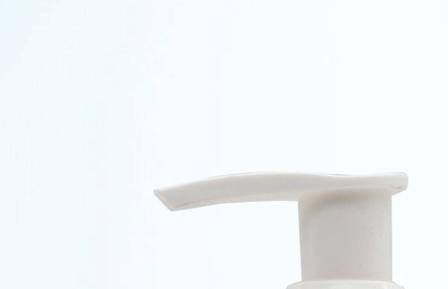










HIGH PERFORMANCE WITH SAFETY












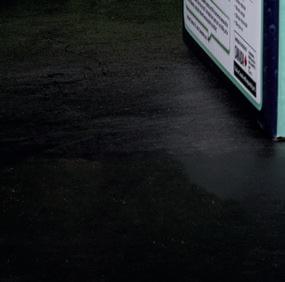




















































F10 hand decontaminants are proven highly effective, yet kind on skin. With broad spectrum efficiency the range will meet your needs with medical-grade soap, hand gel and alcohol-free sanitising.

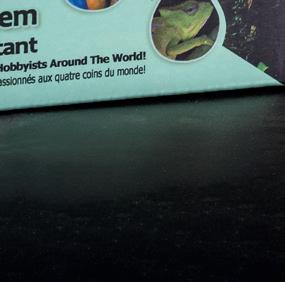
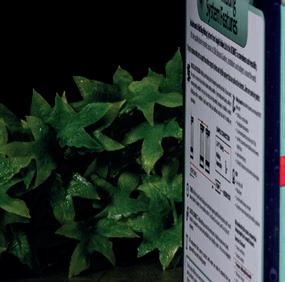






















KEEPER BASICS: HUMIDITY
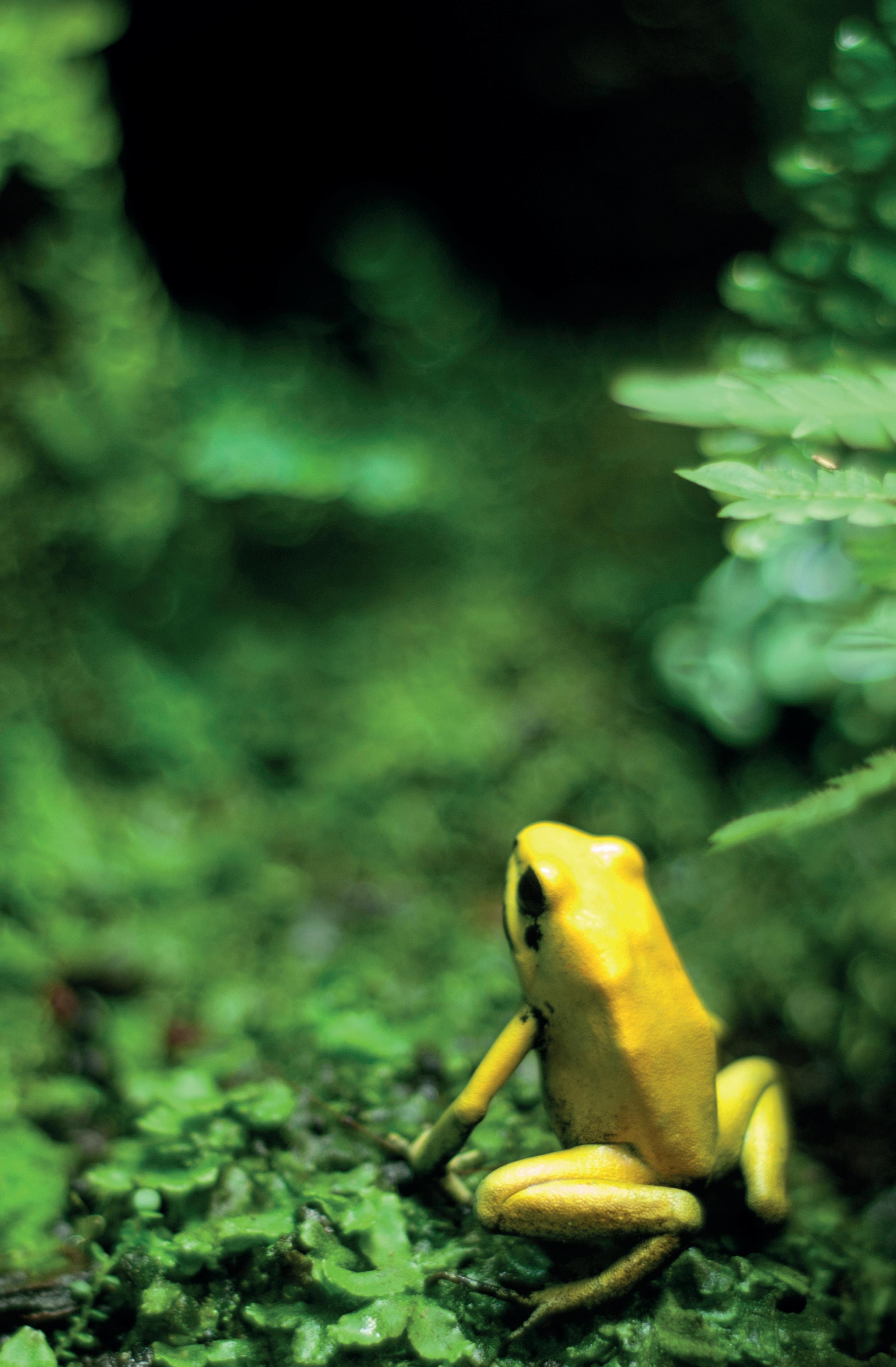 Golden poison frog (Phyllobates terribilis)
Golden poison frog (Phyllobates terribilis)
One of the most over-simplified but intrinsically vital elements of captive husbandry is humidity.
Some species benefit from vast fluctuations, whilst other species will perish without consistently high readings; getting your head around humidity control is a very important aspect of exotics keeping.
What is humidity?
Relative humidity, simply put, is the amount of water in the air. However, the percentage is in relation to the amount of water that the air can hold. So, 100% relative humidity does not necessarily mean the hygrometer (used to measure humidity) is underwater, but that the air in the environment cannot hold any more water.
Water comes in all three forms, liquid (obviously), solid (ice) and gas (vapour). Warmer air can hold more vapour because there is more energy available to hold the water within the atmosphere. Dry locations are hot, but are not humid, because there is not enough water to evaporate, and cold places are dry because there is not much energy to evaporate water, and much of this is stored as ice.
Correct humidity is vital for the well-being of all species, but tropical reptiles, amphibians and invertebrates can be the most reliant. Given the way we house these animals, often in glass or wooden enclosures, it is of paramount
importance that we get this right. Researching the species’ natural history is key to understanding what works and using resources online to determine the daily or seasonal fluctuations in humidity is a great starting point. This method is not fool-proof however, as some species will occupy ecological niches that have higher (or lower) humidity than the readings of our weather stations.
There are also several ways of recording humidity, but in the exotic pet world, we are most concerned with relative humidity.
High humidity
Most amphibians require very high humidity. Amphibian comes from the Greek ‘amphi’ meaning both and ‘bios’ meaning life and suggests that most amphibians require water to develop. It also points towards the fact that amphibians receive much of their oxygen through
40 MAY 2022 Keeper Basics: Humidity
cutaneous respiration and thus needs water in their environment (either in the form of vapour or liquid) to breathe. The increasingly popular subculture of dart frog keeping has paved the way for an entire spectrum of products designed to keep humidity as high as possible, with most dart frogs requiring at least 80% relative humidity. Some species of these frogs come from high altitudes and thus require reasonably cool temperatures as well as good ventilation to prevent diseases. This can create challenges for the keeper.
Increasing humidity to +80% is best achieved with several components. Firstly, a drainage layer beneath the substrate will create a reservoir of water and thus increase humidity gradually. In some cases, this can be warmed with a heating cable to increase the dispersion of water. Air, which is comprised of nitrogen and oxygen (weighing around 28g per mole and 32g per mole) is heavier than water vapour (18g per mole), meaning humidity will
rise. This is where having an excellent quality bioactive substrate is key, as having a loose composition allows more water to rise. For non-bioactive setups, a deeper substrate can hold more water and is therefore better at raising the humidity.
Secondly, live plants undergo respiration and photosynthesis which eventually releases over 90% of their required water back into the atmosphere. A heavily planted terrarium will maintain humidity better than an artificial setup and live plants are almost essential to reaching high humidity. Leaf litter, whilst not photosynthesising, will also support humidity levels as it traps moisture and provides vital microclimates (areas of differing humidity for the animal to move between).
Pools of water placed in the warmest part of the terrarium will also release water into the atmosphere as they are heated via IR-C. Bromeliads are perfect for

41 MAY 2022
tropical setups, but even a strategically placed water dish can help increase humidity in semi-arid enclosures. Moving water also evaporates quicker than still water as molecules rub together and heat up over time. Artificial waterfalls are rarely necessary for most terrestrial frog species but do serve a function in increasing humidity whilst being visually appealing.
Ventilation will allow humidity to escape and therefore striking a balance that allows fresh air into the enclosure without releasing humidity is key. Perspex, glass and plastic are frequently used to keep humidity in, but keepers should be very cautious that these will also block out any UVB radiation from overhead lighting. Naturally, some homes will be drier than others, which is why it is sometimes easier to increase the humidity or temperature of the entire room. This is often why breeding facilities or ‘tropical houses’ in zoos prefer to achieve an ambient humid environment. Keepers should still consider the ambient humidity in their home and aim to maintain a suitable enclosure for several weeks before adding any animals. This gives the keeper time to make any necessary adjustments to the setup without disturbing the inhabitants.
Finally, the easiest way of increasing humidity is ensuring there is always ample water in the enclosure to be evaporated into the atmosphere. This is usually done by spraying or misting. In most cases, high humidity enclosures will need to be sprayed or misted at least every other day (although some may need more, others may need less, depending on species and ventilation). Automated misting systems are majorly beneficial to anyone with several high-humidity enclosures. They can be programmed to the specific requirements of the inhabitants. For example, a 20-second morning mist might be suitable at times, or an ongoing ‘rain chamber’ might be required on other days to stimulate breeding behaviours. A reliable misting system allows the keeper to leave their animals longer than 48 hours, which is crucial for unexpected emergencies or a busy social life.
Low humidity
On the opposite side of the spectrum are low humidity, arid enclosures. These pose a different set of challenges, but in many ways are more forgiving than high humidity enclosures. Most desert species will still benefit from the occasional humidity spike, whereas tropical forests will never fully dry out.
Relative humidity can be lowered by essentially reversing all the ways in which it can be increased. Lots of ventilation, dry substrate and infrequent spraying will ensure humidity remains low. Using a smaller water bowl and moving it towards the cool end can also reduce humidity.
If only one animal (or animals with the same humidity requirement) is kept in the room, a dehumidifier will help bring the overall humidity down. It is then much easier to increase the humidity within the enclosure to meet the animals needs than to battle with a high-humidity room. Here in the UK, average outdoor humidity jumps between 40% in the day and 90% at night, with coastal areas being most humid. This means most homes should not struggle to provide very high or very low humidity environment if the correct elements are used within the enclosure.
On occasions where an arid species is having to be kept in a humid room, there are some tricks including adding absorbent materials or even dry rice to a hidden area within the enclosure. This is only a short-term solution but may alleviate some issues if the keeper is stuck.
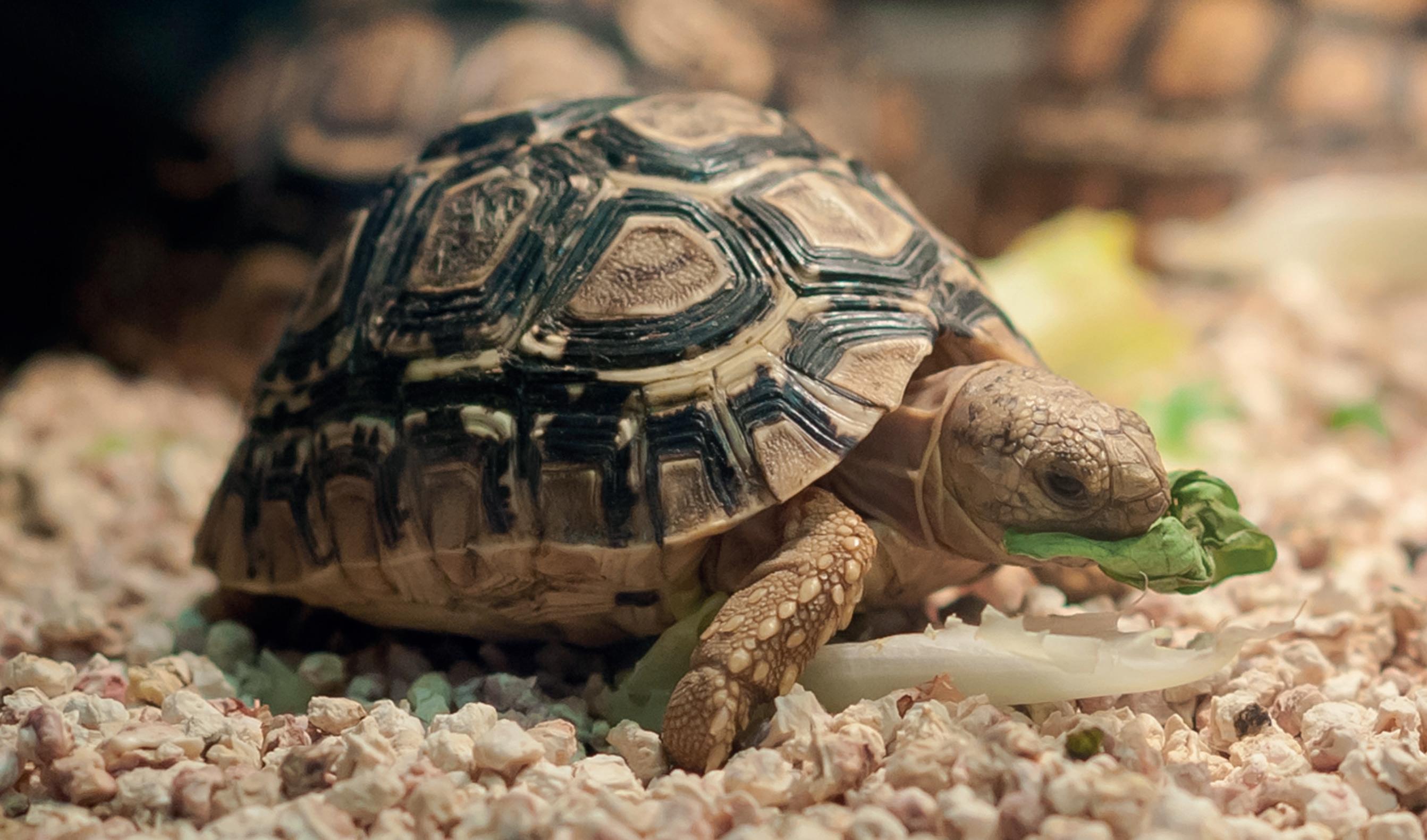
Maintaining humidity
At night, the humidity will increase. Just turning the warm lights of an enclosure off will see humidity increase drastically in a reasonably short space of time. Providing it is not to the detriment of the animal, a shorter photoperiod can help support healthy humidity fluctuations. For species that are particularly sensitive to humidity, it is a good idea to invest in a hygro/thermometer that records the highest and lowest levels over a 24-hour period. These are inexpensive
42 MAY 2022
and gives the keeper insight into their enclosure throughout the night.
Providing choice is key to maintaining good animal welfare. Whilst it’s widely understood that reptiles should be provided with temperature gradients and most people will understand the benefits of providing UV gradients, humidity is slightly different. Humid hides are majorly beneficial to many species, particularly during times of shedding. However, different substrates used in different areas of the enclosure can create important microclimates that allow the animal to move between humidity levels. This is crucial for Mediterranean tortoise species which require periods of higher humidity to ensure healthy carapace growth. For keepers opting to use a tortoise table to house their animals, using multiple substrates (with a primary soil-based substrate) that receives regular misting will help maintain some humidity, even in an open-topped enclosure.
Spot bulbs or compact UVB lighting can dry a ‘basking spot’ out whilst humidity across the rest of the enclosure remains high. The most well-ventilated and most exposed area of the enclosure will therefore have the lowest humidity. Keepers should consider whether their animal is particularly sensitive to lower or higher humidity and consider placing the hygrometer accordingly. For example, it makes sense to record the lowest humidity location in a frog enclosure, as this poses the greatest

risk to their health. Those that have adjusted the tops of their enclosure to only allow some ventilation from a specific area beneath the lighting will see noticeable differences in humidity readings across the entire tank. Having two hygrometers at either end may be useful in these cases.
Microclimates and ‘clean air’
Bioactive set ups have a huge wealth of benefits when it comes to maintaining humidity. A clever choice of plants will provide microclimates that can be utilised by the inhabitants. For example, a well-planted enclosure that sits at 70% ambient humidity will likely contain pockets of higher humidity amongst the ground cover. Bromeliads such as Cryptanthus will also hold pockets of water, which will naturally raise the humidity in those areas. Broad-leaved plants such as Monstera will also hold pockets of higher humidity beneath their leaves as water is released upwards into the environment. Choosing a good quality bioactive substrate can help support this cycle, as ingredients such as activated charcoal, decaying wood, or even a healthy colony of isopods will aerate the soil. Humidity will be released from the water in the drainage layer gradually, at different rates across the enclosure. This is extremely important for arboreal snakes such as green tree pythons (Chondropython viridis & Morelia azurea), which require clean air and naturally fluctuating humidity levels.

DID YOU KNOW
In drier areas, the highest humidity readings are usually those close to the warmest bodies of water. The red sea is a prime example, where humidity
much higher near to the coast.
Title 43 MAY 2022
Even though rainforests cover just 6% of the Earth’s surface, they are home to over half of all plant and animal species. As they are mainly located in the tropics (or Cancer and Capricorn), they receive immense amounts of solar energy. This keeps humidity upwards of 70% for most the year and means that most tropical rainforests produce almost 75% of their own rain, just through increased humidity.
Seasonality will affect humidity readings drastically. In fact, prolonged periods between wet and dry seasons will cause plants to flower or fruit without consistency. Therefore, animals from semi-tropical environments are often very adaptable which emphasises the need to provide humidity gradients.
is
43
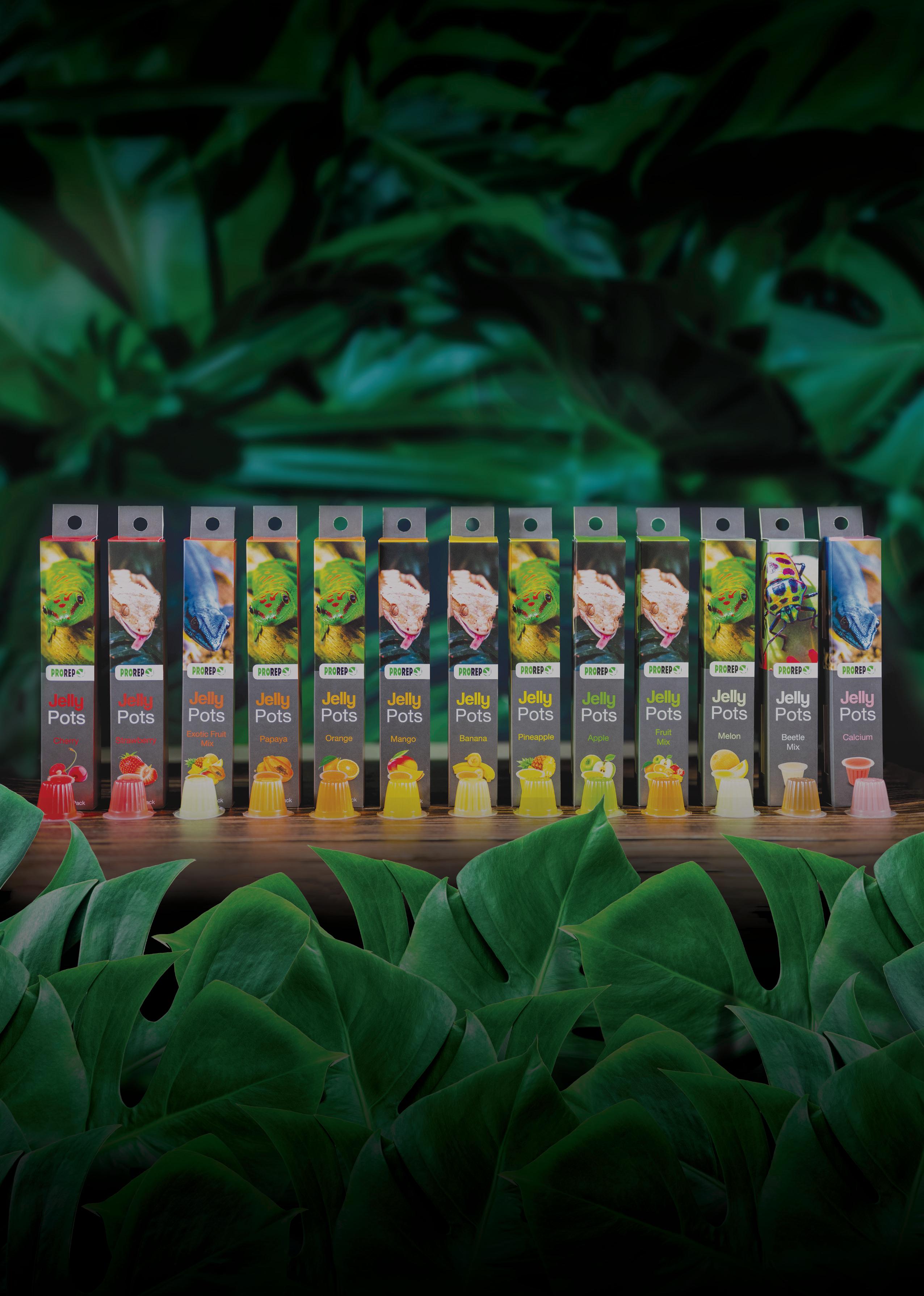






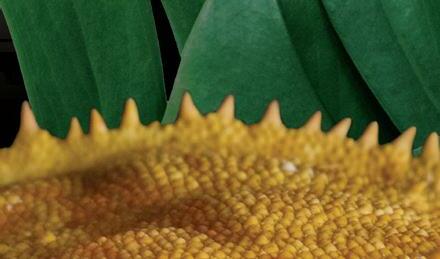




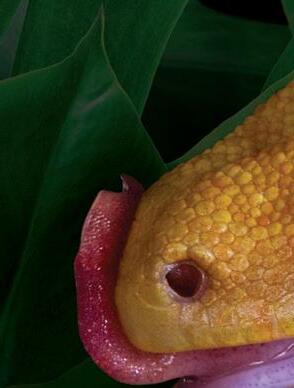





www.pro-rep.co.uk
FASCINATING FACT
Tigers in Europe
Of the 10 Panthera tigris subspecies on record, only six remain. Three of these subspecies have been wiped out during the 20th Century, when tigers were found from Ukraine to Bali. The Caspian or ‘Persian’ tiger (Panthera tigris virgata) was the largest tiger subspecies, and its range bordered the Caspian Sea, including Turkey and Ukraine.
Weighing in at around 240kg, it is amongst the largest cats to have ever roamed Earth. It inhabited sparse forests and riverine corridors throughout its range, which at one point, stretched all the way into Western China. These fragile populations that relied on waterways to survive the harsh deserts were dependent on equally fragile populations of wild pigs and roe deer.
The demise of the Caspian tiger began with the Russian invasion of Turkestan in the late 19th Century. Military personnel would frequently hunt the tigers and their prey, as they further expanded into the desert. Vital reed beds were chopped down in favour of crops, which grew prosperously in the silt. By the 1930s, swine flu had also had a major impact on the wild pig populations across the tiger’s range.
In Turkey, the last reported killing of a Caspian tiger was in 1943. However, surveys in the region claimed that one to eight tigers were killed in Turkey each year, right up to the 1980s, suggesting that the last remaining Caspian tigers survived until the early 1990s. Although extinct across almost its entire range by the 1960s, there was one last recorded sighting of a Caspian tiger on the Afghan-Tajik border in 1998.

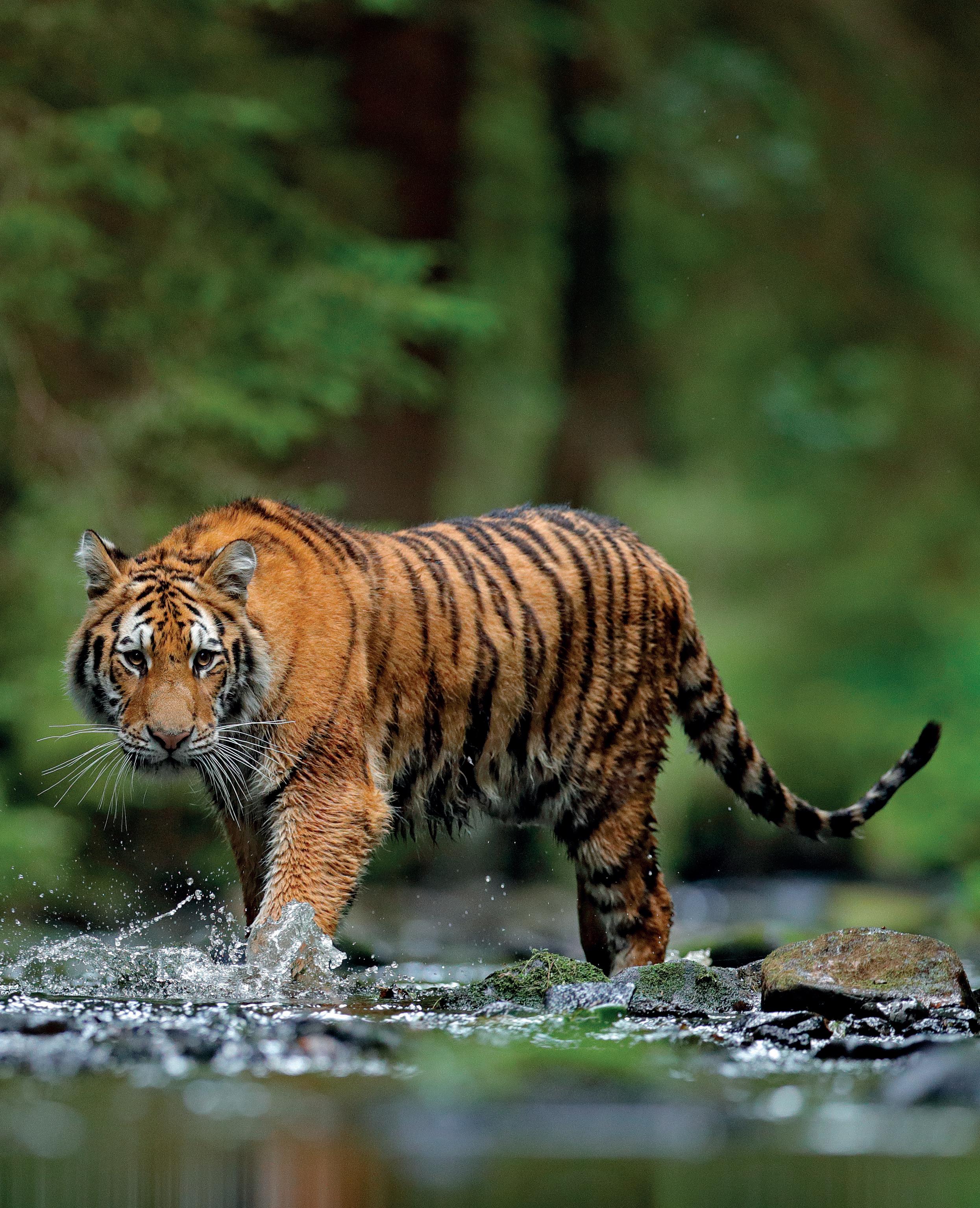
45 MAY 2022 Fascinating Fact
The Amur tiger (pictured) is genetically very similar to the Caspian tiger.
Panthera tigris virgata
ENRICHMENT IDEAS
Reptile intelligence
The field of enrichment for reptiles and amphibians stems from the core fact that these animals have significant cognitive capacity – it’s hard to believe it, but only a few decades ago, reptiles and amphibians were regarded as animals with no comparable ‘emotions’ to mammals, such as fear or pain. In captivity this also translated into opinions that they did not care how elaborate and naturalistic their simulated environments are, which we now know from many anecdotal and peer reviewed cases, to be false.
What’s more, leaps and bounds have been made into proving the cognitive ability of reptiles. They are smarter than was once believed, which means mental enrichment is even more important to prevent boredom and stress, and to promote innate natural behaviours.
A peer reviewed article written by Lori Torrini in the IAABC Journal, titled Potential Neural Consequences for Snakes Under Captive Management, explores the past assumptions about reptile intelligence and the possible dampening of their cognitive potential due to living in ‘deprived environments’. The effect of under stimulating, deprived environments is largely the same across all vertebrates in studies – so it can be assumed reptiles are included in this. Neurons in the brain communicate with each other every time a new experience is encountered that may be considered mentally stimulating – this is known as neuroplasticity – so in short, mentally engaging environments and experiences change brain activity over time via neuroplasticity. If the opposite is the case and there is no mental stimulation going on, the mental state of the animal stagnates, often even becoming negative and resulting in ill health.
Feeding scenarios
We have covered that reptiles love to climb, explore, dig, and soak. They are also expert at seeking out their food with their highly specialised olfactory systems, and we have laid out methods to put this to the test via scent trailing and hiding prey. Gauging the activity level and intelligence of your animal, you can ramp up the complexity of these feeding methods in the way that you conceal prey.
For example, monitor lizards, arguably some of the smartest reptiles, love to be put to the test rather than being hand fed all their food items. Varanids can be challenged by hiding food inside vessels such as glass jars, boxes with holes and wicker bird nests. This means the monitors have to use their sense of smell as well as their limbs to reach their food.
Similar commercially available décor items exist for species such as leopard geckos and beardies as well, where insects are released gradually from a sealed feeding vessel with
lots of holes. This can slow down eating time and be more mentally stimulating than a regular dish.
When it comes to herbivores, a simple act such as leaving greens in large chunks rather than chopping it up can also be beneficial. Tortoises and bearded dragons will have to spend more time chewing and tearing apart their food, as foliage would be presented to them in a wild setting.
Memory refresh
Reptiles are able to remember routines, scents, and routes. Snakes have been recorded in scientific trials memorising routes to hiding spots within mazes in only a matter of days. With this in mind, once your animal knows every inch of their enclosure, it may be beneficial to mix things up. To do this you can introduce something novel to the environment for them to explore, and switch this up on a regular basis, swap a new décor piece, or completely rearrange the enclosure.
Trust
Interacting with your reptile can be challenging at first, but is a rewarding process, as well as important to be able to carry out regular health monitoring – especially if inspection by a vet is needed. Feeding scenarios are a great way to slowly build up trust with nervous animals as they will associate you with something positive. If you can get to the point where a lizard species for example will willingly approach your hand to eat, then that’s great progress.
For a large species such as varanids that may have an aggressive feeding response, target training can be great – and plays into their cognition by asking them to use their senses and memory. Put simply, a coloured ball or surface is presented on a stick for safe distance, and the animal is taught to associate contact with that surface with receiving food. Many have had success using this method on their over excited snakes as well, as a way to make feeding times go more smoothly, and test their capacity to learn through association.
Handling can also be an opportunity for good enrichment, so long as trust has been established and the area handling takes place is safe and secure. Time outside the regular enclosure can provide plenty of fresh sights, smells, and exercise.
If it safe to do so, time outside when the weather is appropriate can also be very beneficial by exposing reptiles to natural sunlight and UVB. Coming up in time for summer will be a guide to taking reptiles outside both temporarily and seasonally, so stay tuned.
46 MAY 2022
Enrichment Ideas

Title 47 MAY 2022 Slow down! Are you getting the best deal on your Exotic Insurance? We also offer dog, cat and horse insurance, all with a fantastic 10% multi-pet discount!* Get a quote TODAY at britishpetinsurance.co.uk or call us on 01444 708840. *10% discount on three pets or more from any species we cover within our pet insurance product range. British Pet Insurance Services is a trading name of Petcover EU Limited who is registered in England and Wales under number 10001319. Petcover EU Limited is authorised and regulated by the Financial Conduct Authority under reference number 747757.
Replicating high temperatures for breeding doesn’t have to be hard:



• Deep penetrating infrared wavelengths for safe & efficient heat.

















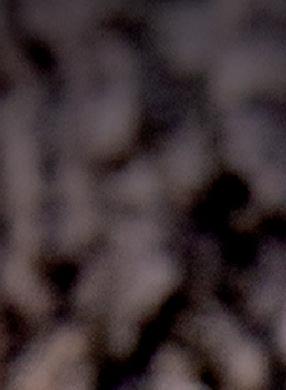








• Wide beam for thorough coverage.



• Can be used 24h/day.
Banana Iguanas (Ctenosaura pectinata) are large lizards native to hot, dry habitats such as dry forests and deserts in Mexico and Central America where they regularly experience ambient basking temperatures of over 104º F. In our large Iguana Habitat here in the mild climate, we found it difficult to attain the high basking temperatures these animals desired. Although these animals were active and appeared healthy for over 12 years here, we did not have any success breeding them until adding a Zoo Med Infrared Heat Projector above one of their basking sites. The animals seemed to prefer this heat and spent an increased amount of time relaxing under these heating elements, then finally laid a beautiful clutch of eggs that hatched successfully 77 days later. After many years of trying different strategies to encourage reproduction, we are pleased to finally introduce the offspring of our Banana Iguanas! www.zoomed.com

FOR
Adult Banana Iguana Ctenosaura pectinata
Baby Banana Iguana Ctenosaura pectinata
ZOO MED SUCCESS:







 Thomas
Thomas




















 Chinese water dragon (Physignathus cocincinus)
Chinese water dragon (Physignathus cocincinus)
































































































































































































 How 15,000 scorpions and spiders are vying for position on the Isle of Sheppey.
How 15,000 scorpions and spiders are vying for position on the Isle of Sheppey.





































































































 Golden poison frog (Phyllobates terribilis)
Golden poison frog (Phyllobates terribilis)
























































